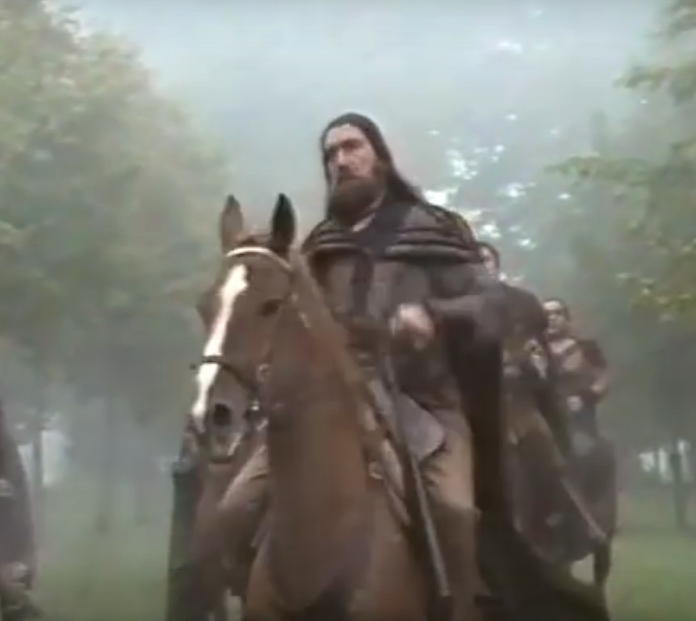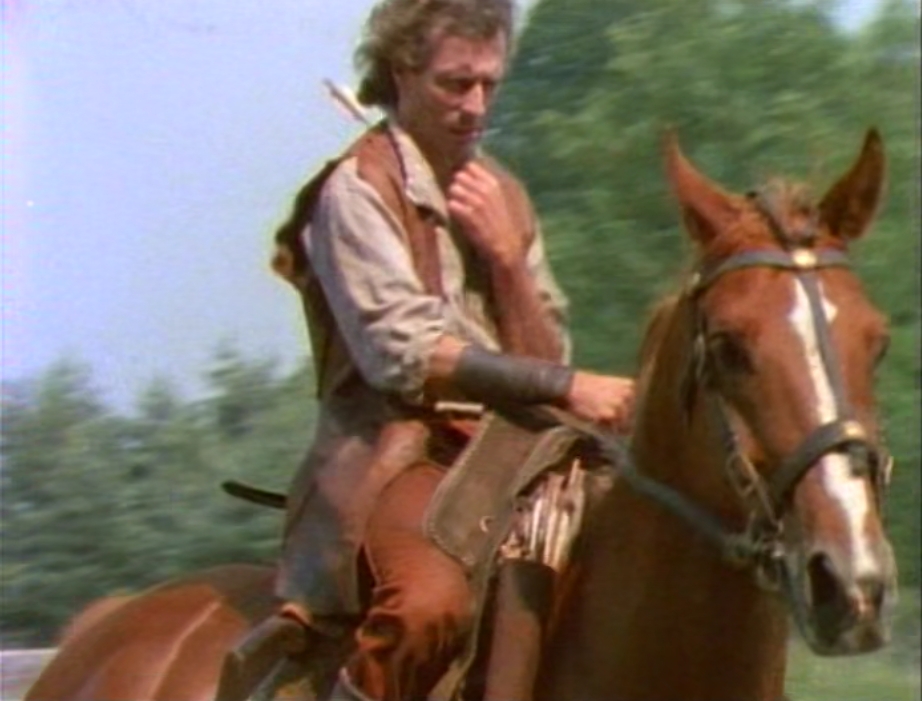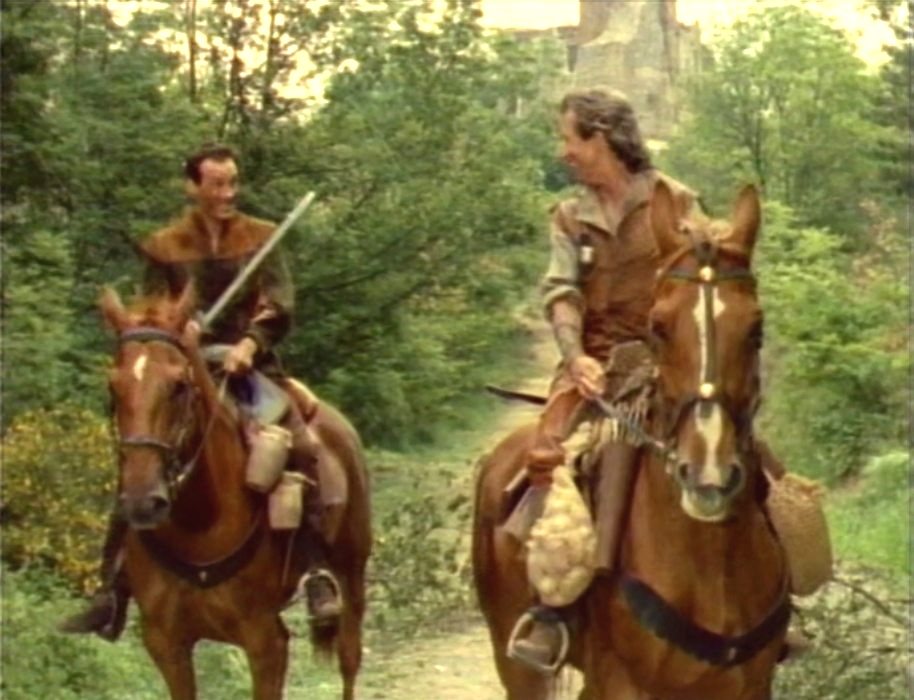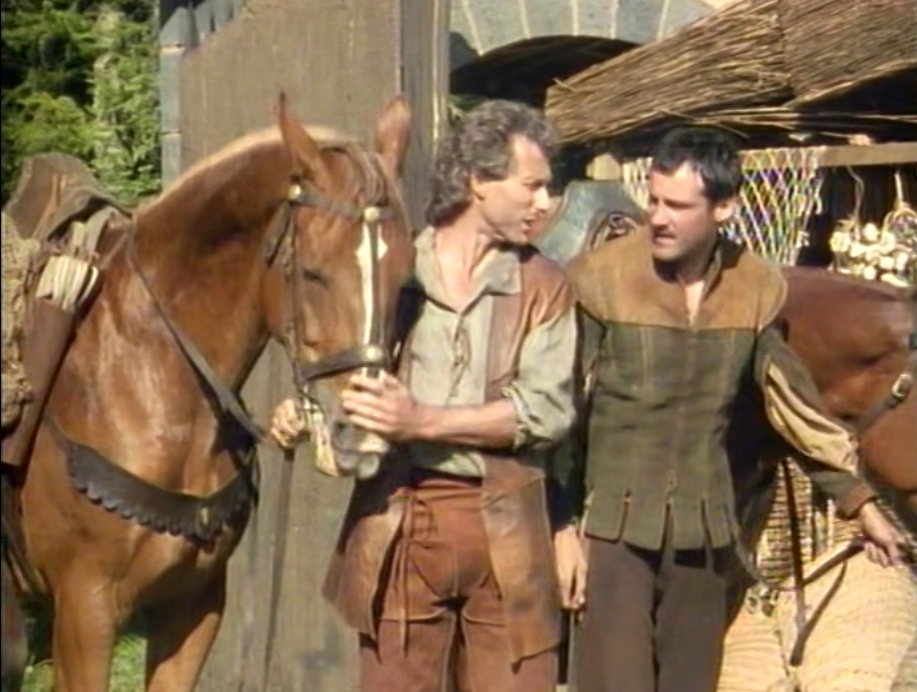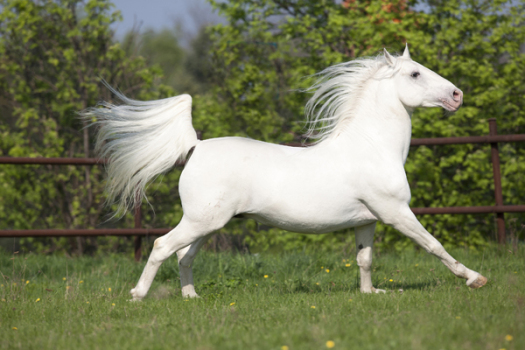
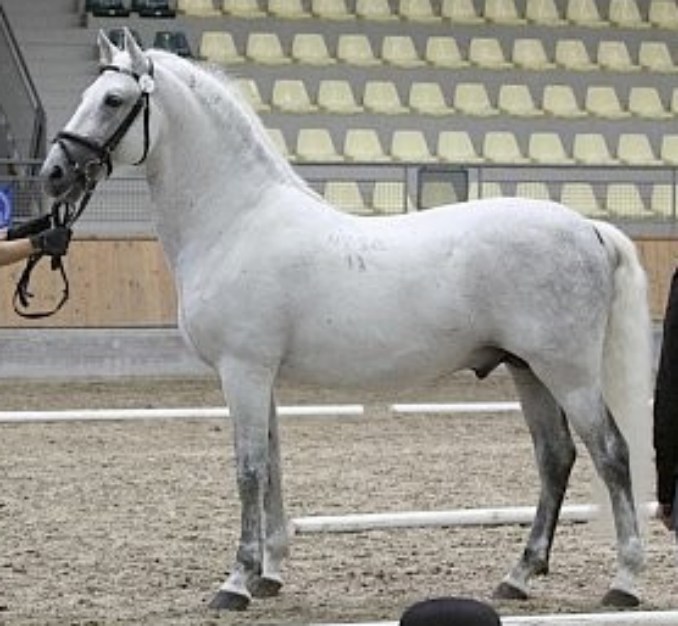
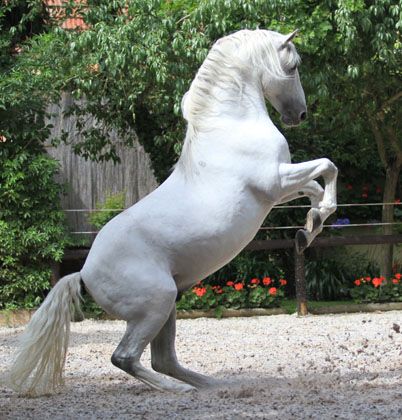
The Lipizzan horse



The lipizzan horses are usually fungal (when foals are born dark, but becoming white after years). In addition to fungi, the colors are brown, dark brown and black,
occasional fox and falcon. The head is expressive, with big speaking eyes. The nose line is sub convex (a slightly bulging ridge nose).
Napolitano
'Napolitano' is Tell's Lipizzan horse. The name is very common in the Lipizzan bloodline (see above at 'bloodstructure'). Tell gets the horse from his friend Stefan in episode 10 and
rides with it through season 1 and 2. Season 2 he doesn't ride much anymore. Sometimes a Fresian, sometimes a brown horse or Marrok horse. Until episode 10 he has Guitano a
brown hors. Dantes also seems to ride this big horse in episode 6 and 7 Albion and Sanctuary. The middle horse doesn't look like Napolitano (scene Lady Montal in the gardens of
Chateau Pouzilhac) but more like a wild maned temperamentful Andalusian, perhaps this horse was better for this stunt.
A compilation of the adventures of Tell with his white beauty Napolitano about two years at his side.
La Voie sarde and Desert of Entremont The Imposter Pouzilhac, The Promised Land (not Napolito) Lussan, The Tower
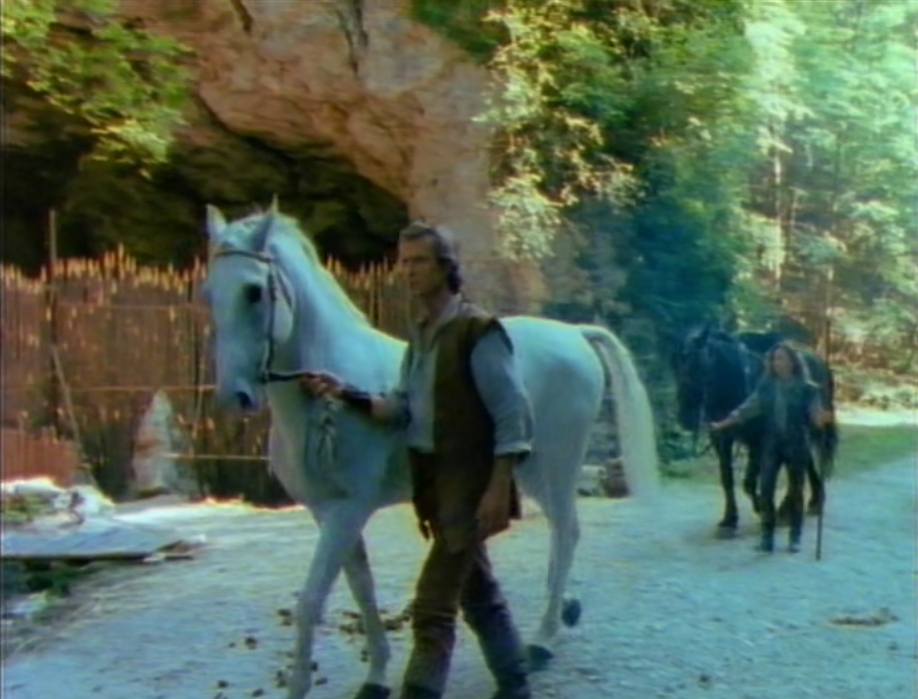
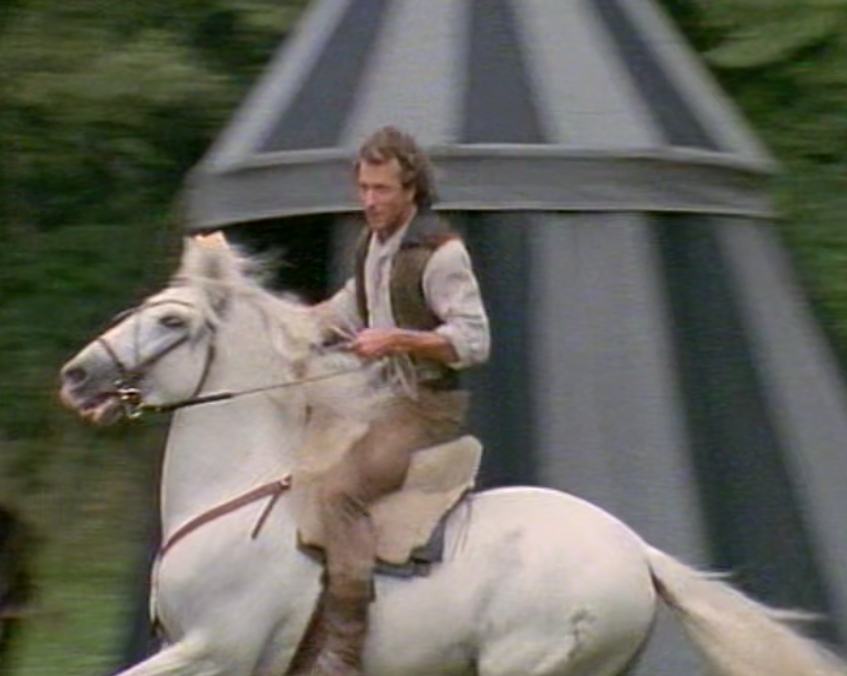
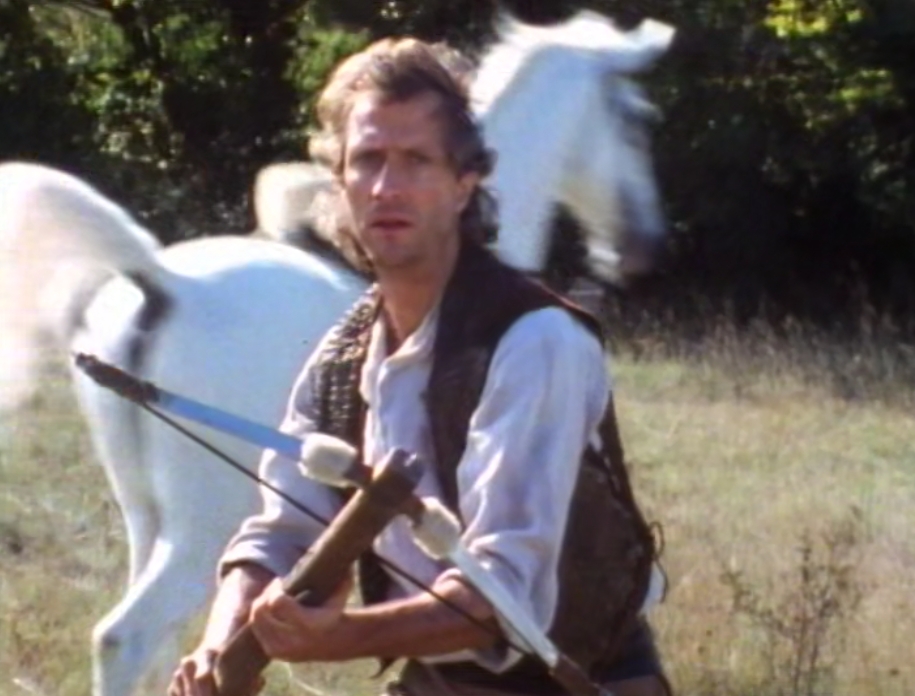
Arlempdes The Stallion Uzes Vallee l' Eure Ladyship
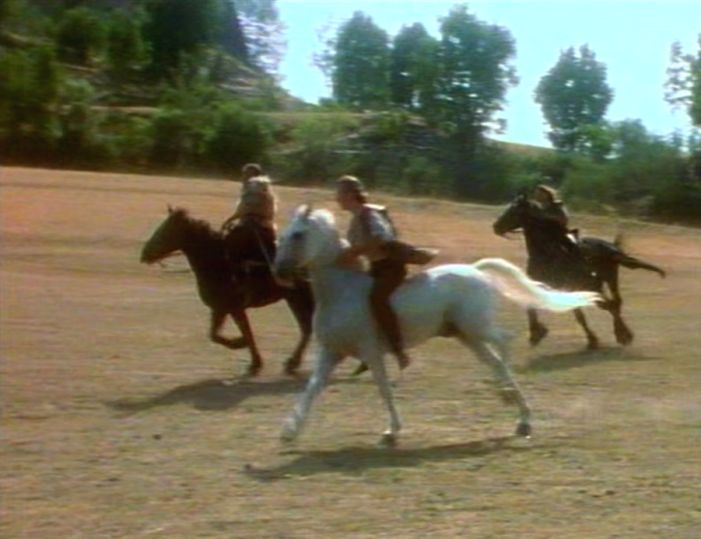
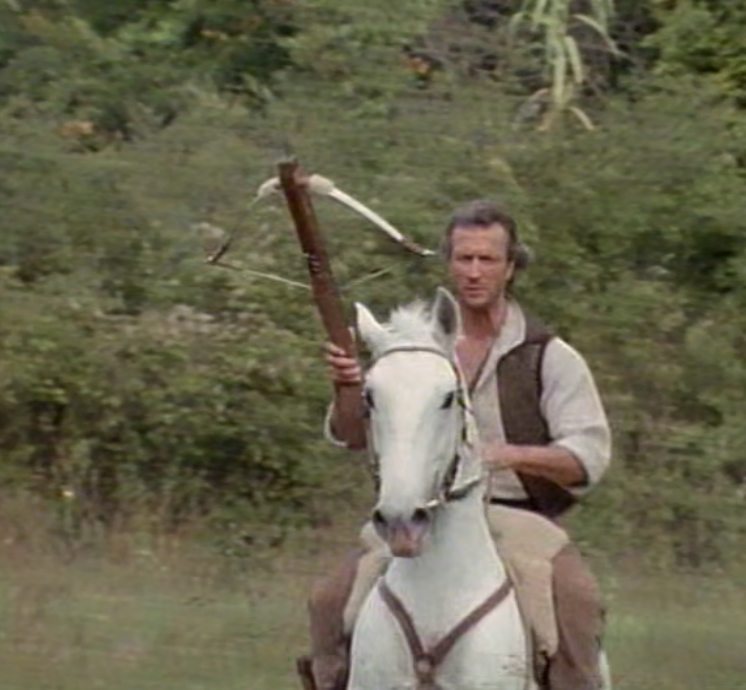
More about Tell's horse below. First some information about the horse: The height is in practice between 148 and 162 centimeters, the breed standard is between 155 and 158 centimeters. The neck is set quite
high and gives a proud impression. The body has a flowing topline, with little pronounced withers, medium back and round cross. The wallpaper is fine and silky-like. The legs are short, hard and strong, the feet
are small and well formed. The movements are proud and exalted. The lipizzan should have a natural predisposition for collection, so that the heaviest exercises of classical dressage can be performed.
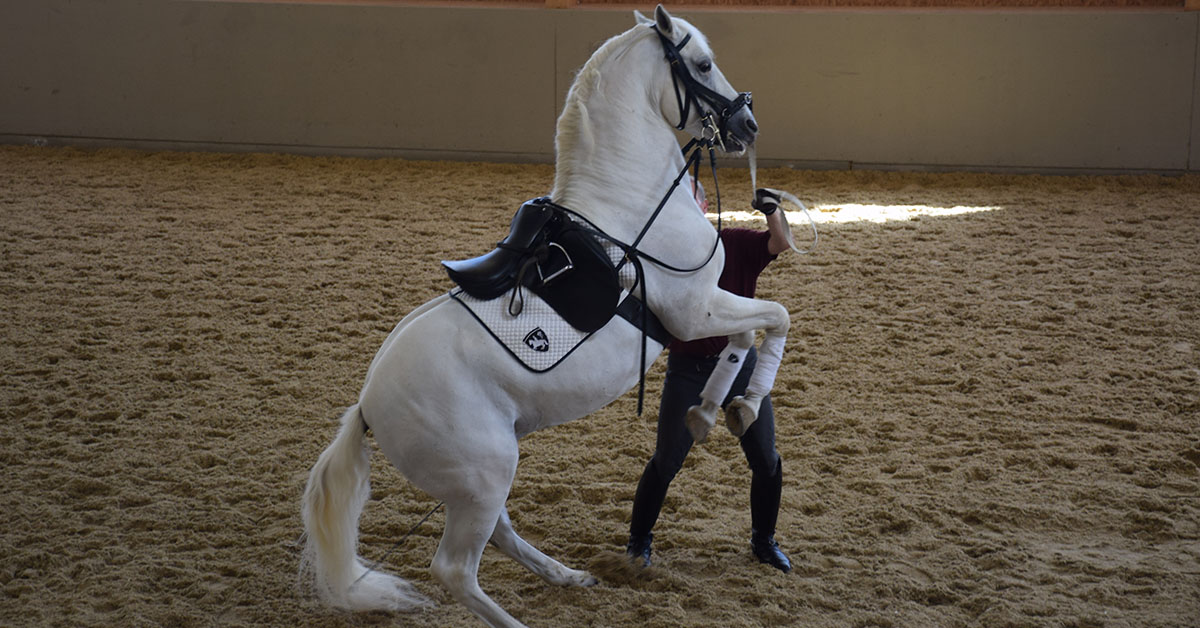
The origin of the breed dates back to 1580. In that year, the Austrian Archduke Charles II of Austria founded its own court stud farm. He bought from the bishop of Trieste the estate "Lippiza" near Sežana (Sessana)
and ordered the construction of a stud farm. His objective was to breed horses for transport, parades, battlefield and hunting, especially for the benefit of his own court in Graz. The stately Spanish horses of his cousin's
court, the Spanish King Philip II, in Cordoba (Las Caballerizas Reales de Córdoba) were an inspiration to him. The purchase of the first horses was done in Spain in 1581. In the following years followed various
transports of stallions and mares from southern Spain, purchased by the Austrian ambassador in Spain, Baron Khevenhüller. In addition to Spanish horses, horses of a similar type (the Napolitaner) were also brought in
from Italy later on. Although later historians have written that homegrown horses ("karster") would have been used in the court stud farm Lippiza, nothing can be found in the imperial archives.
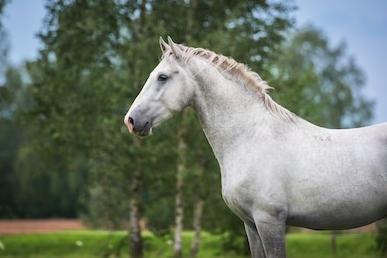
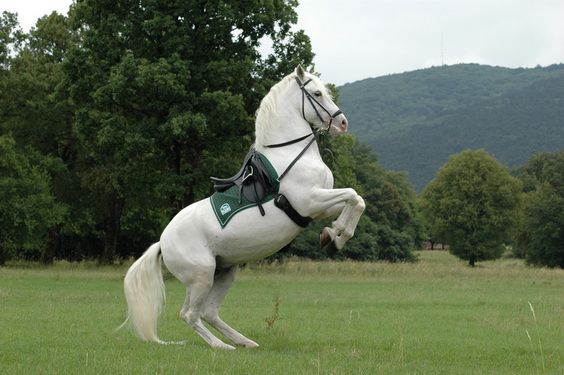
When the son of Charles II became emperor in Vienna, the court stud farm Lippiza has since then become the purveyor of baroque riding and carriage horses for the imperial court. In addition to Lipizza,
the court also owned other stud farms, such as the breeding of the Kladruber in Kladruby nad Labem, Kopcany, Enyed and Halbturn. There was a constant exchange of breeding material of the Spanish type
between these stud farms. From the beginning of the 18th century, in addition to Spanish and Neapolitan horses breeding horses were bought or obtained from other court stud farms in Europe. For example
from the Danish royal stables in Frederiksborg and the Hofstoeterij Bückeburg in Germany. In addition, several Arabian horses were also used.
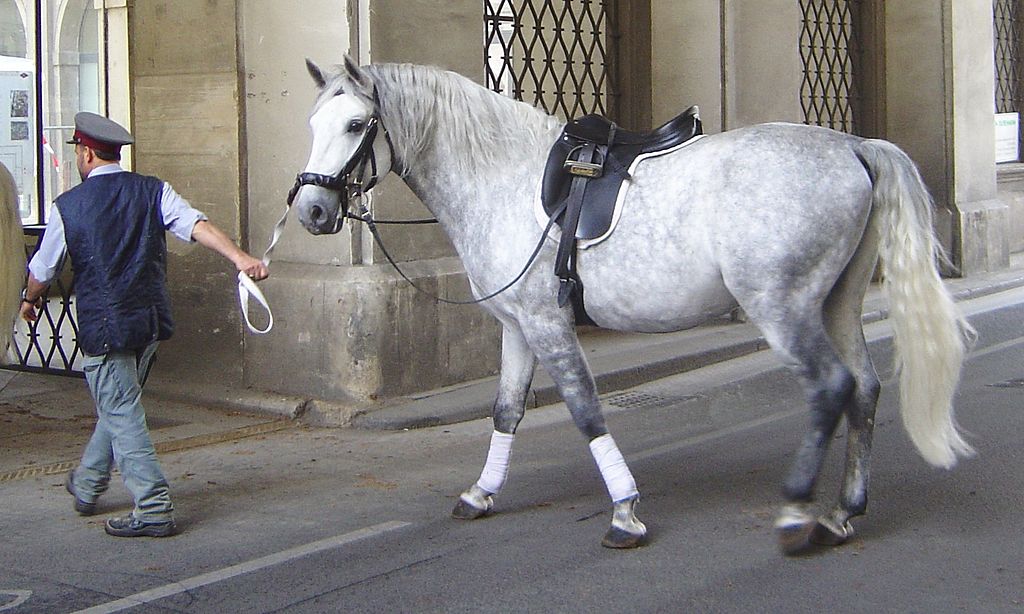
Evacuation during wars
The horses of the Lippiza court stud farm were regularly evacuated during various wars. The first times during the Napoleonic Wars in 1796 and later. At the beginning of the First World War, in 1915 the horse
stock of Lippiza was transferred to the Austrian Laxenburg near Vienna. After the First World War, the old Austrian-Hungarian empire fell apart, and the Lippiza area of Italy fell to Italy. The great part of the
imperial herd had to be handed over to the Italians, who from then on used the Italian spelling: Lipizza and Lipizzaner. Ninety-nine horses remained in the new republic of Austria, and were brought to the Piber
stud farm near Köflach in 1920. These horses formed, together with the lipizzaners from Radautz, the basis for the current Austrian lipizzaner breeding, the supplier of the Spanish Hofrijschool in Vienna.
A number of foals from Lippiza and Laxenburg stayed in Kladrub in 1919 and fell to the new Czechoslovak state. In 1921 they were taken to the newly established stud Topol'cianky. In the other new
states of Hungary, Romania, Czechoslovakia, and Yugoslavia, lipizzaner breeding between 1919 and the Second World War was independently set up and expanded, at its own state stud farms.
Another major move took place in the Second World War. In 1942, the German army command ordered all lipizzaners within their power to be collected and deported to the Czech town of Hostau (Hostouň).
These were the horses from the Italian stud Lipizza, the Austrian Piber, the Yugoslav court stud Demir Kapija, the stables of Dušanovo near Skopje. In addition, the Arabs of the famous Polish stud Janow were
added. The aim of the Germans was to breed an ideal horse for the lightly mounted troops, based on lipizzaner blood. In 1945 all these horses threatened to fall into Russian hands. A rescue operation by American
troops with the approval of the famous General Patton brought all animals to safety. The Austrian horses were then taken to Wimsbach (Oberösterreich). Only in 1952 could they return to Piber. Because
Lipizza did not stay Italian anymore but fell to Yugoslavia, the Italian horses ended up in Monterontondo (near Rome). The remaining Yugoslavian horses fell under the American army, and were only returned
in 1947. These came back as the only original horses in the stables of the old Habsburg court stud farm, from then on "Lipica". The Lipizzaners endured not only the collapse of the Habsburg Empire, both
world wars and the frenzied breeding trials of Hitler, Stalin and Ceauşescu, but also the war in the nineties that marked the end of old Yugoslavia.
In addition to the above-mentioned stud farms, nowadays lipizzaners are also bred in the Croatian studs Djakovo and Lipik, the Bosnian stud Vucijak (in Prnjavor), the Serbian stud
Karadjordjevo, in the Hungarian stud Szilvásvárad and the Romanian studs Sambata the Jos and Beclean. In addition, the lipizzaner spread out over the world after the Second World
War. Private breeders are active all over the world, not only in Europe, but also in the United States, Australia and South Africa. Famous larger private studdies include Temple
Farms near Chicago the South African Lipizzaner in Kyalami and Kelebija in Serbia. They make the Lippizan less robust. That's what they also did with the Friesian Horse.
A classic type Lipizzan , see the neck, their build is robust and the nose-line bend A modern type Lipizzaner, they are built lighter.
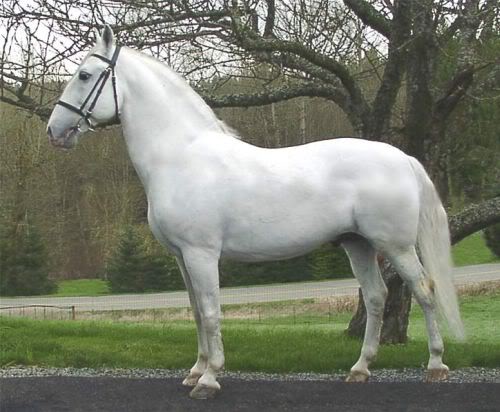
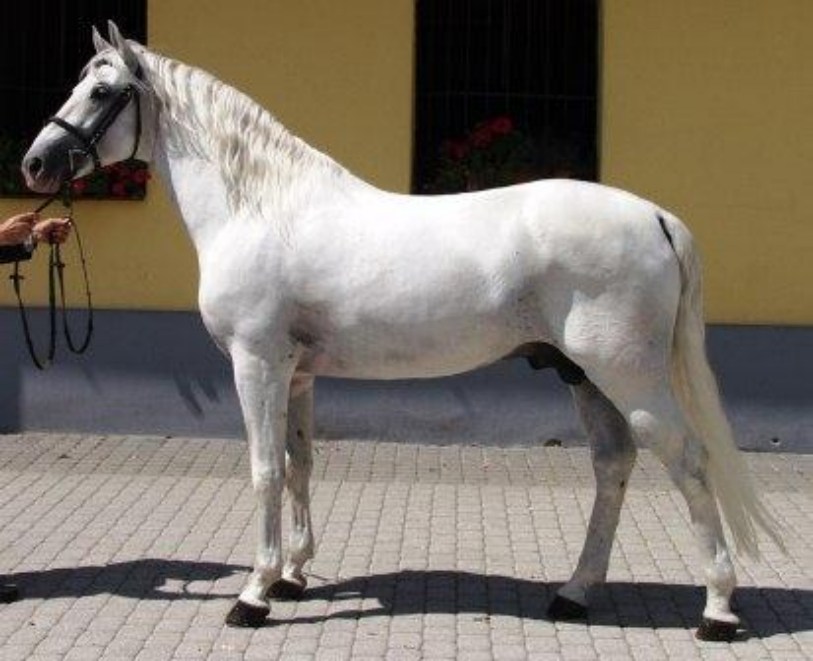
Below the Lipizzan horses I used to ride.
They have a nice movement, they ride well, are not that big and they are beautiful. Tell's horse is also of this breed.
If the name of Tell's horse Napolitano is also the bloodline name, then these horses happen to be related
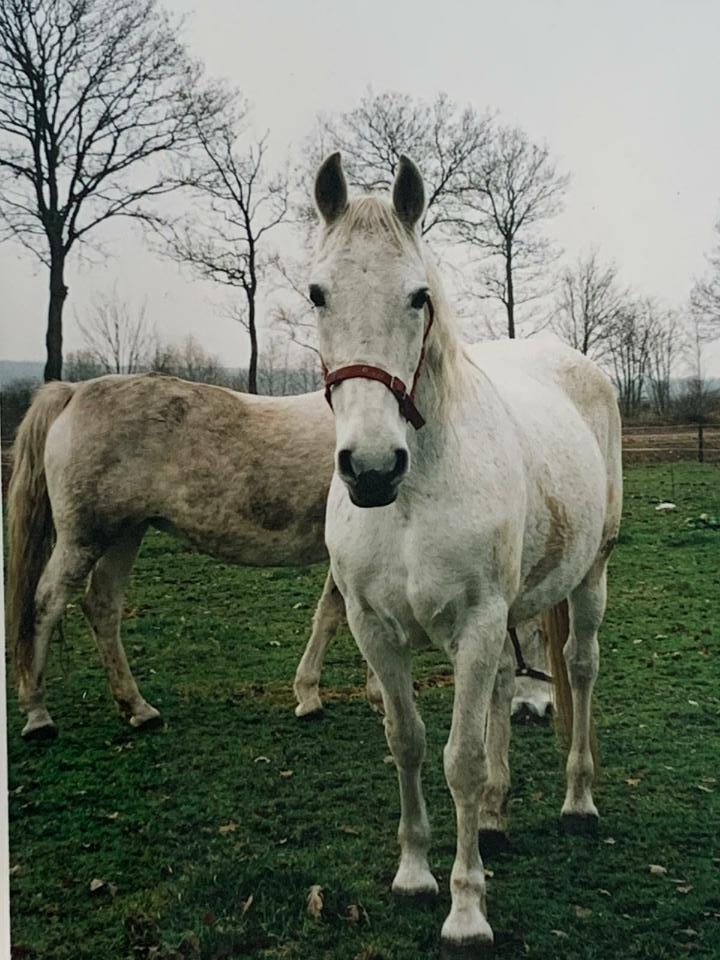
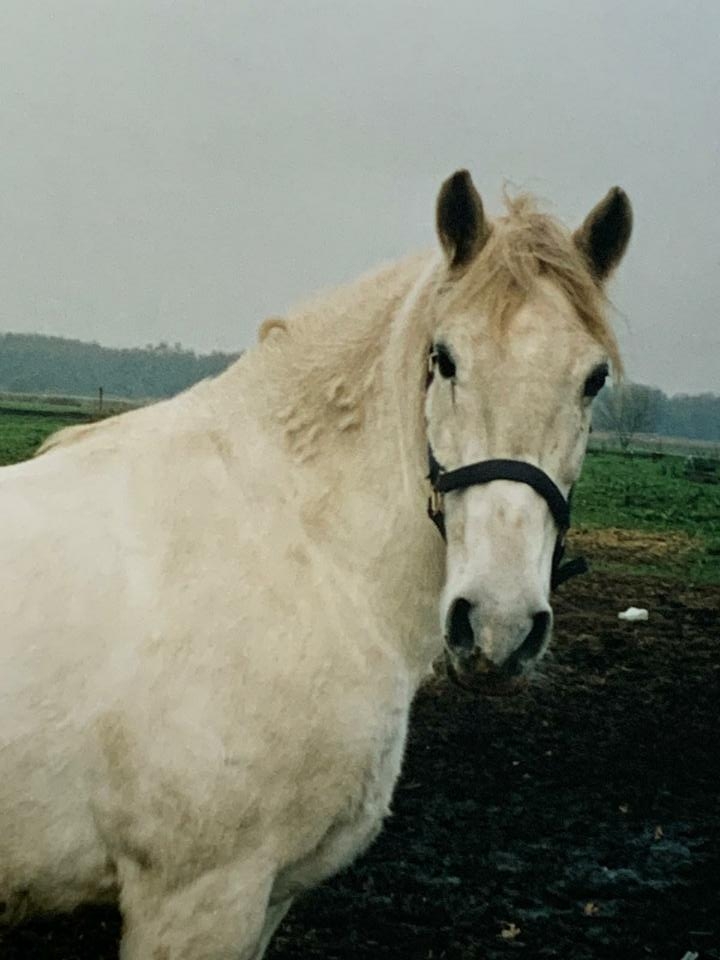
The stud in Lipica
Lipica Stud Farm was established in 1580.
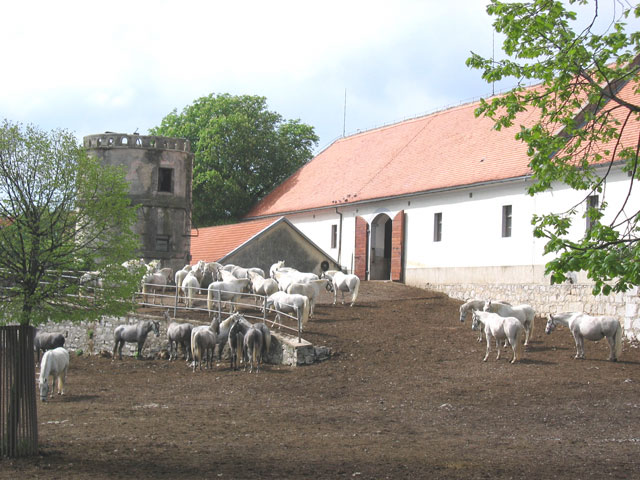
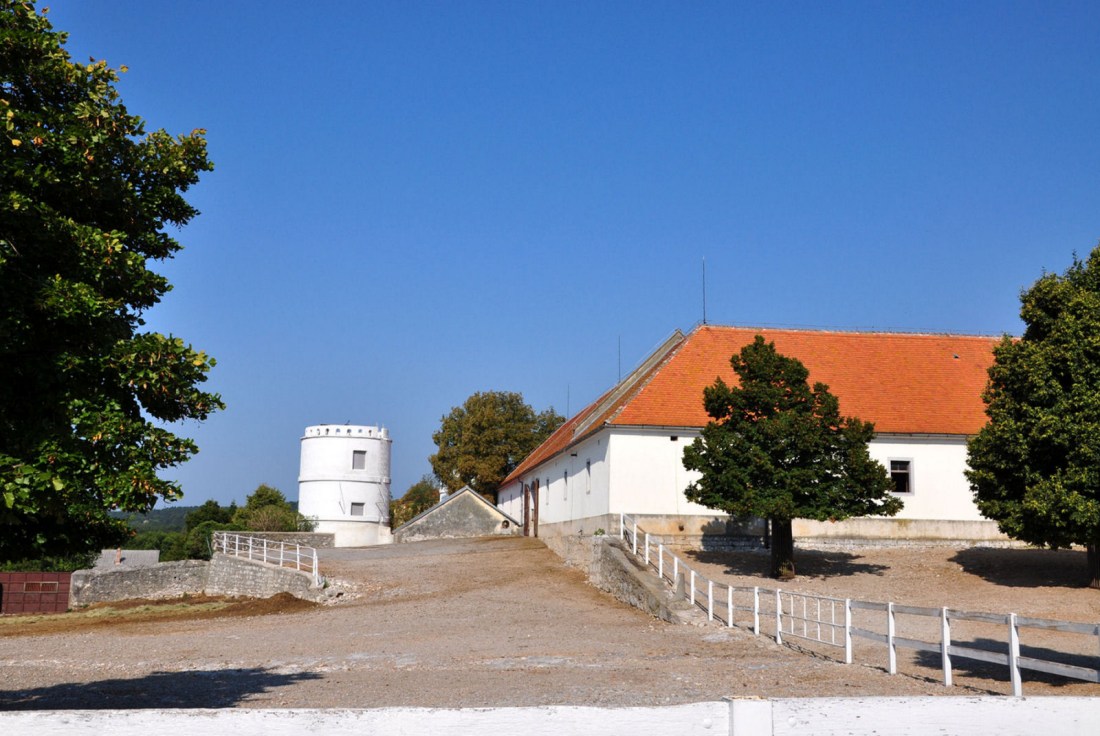
The Lipica Stud Farm is the cradle of all Lipizzaner horses in the world. It’s one of the most beautiful cultural and historical monuments in Slovenia, with the history reaching back to the year of 1580.
It is about an hour and 20 minutes drive away from the Bled area, so horse lovers can easily make a day trip to Lipica and see the stud farm. Guided tours are available in Slovenian and English
language. Upon prior request (at least 3 days before), they offer a guided tour also in German, Italian and French language. The tour provides a good overview of the history and walks you
through both the older and newer buildings that make up the farm with a chance to visit with both the stallions and the mares with their foals. It is also lovely to see the horses and riders
during a training session. It’s a horse lovers dream day out but you do not have to be a horse lover to savor this experience.
Guided tours are available:
January, February, March, November, December: 10:00, 11:30, 13:30, 15:00
April, May, June, July, August, September, October: 10:00, 11:00, 12:00, 13:00,
14:00, 15:00, 16:00, 17:00
Duration of the guided tour is 50 minutes. Price of the guided tour: adults €12, students €9, children 5-15 years €6, children up to 5 years €1.
The Lipica Stud Farm is one of the most beautiful cultural and historical monuments in Slovenia.
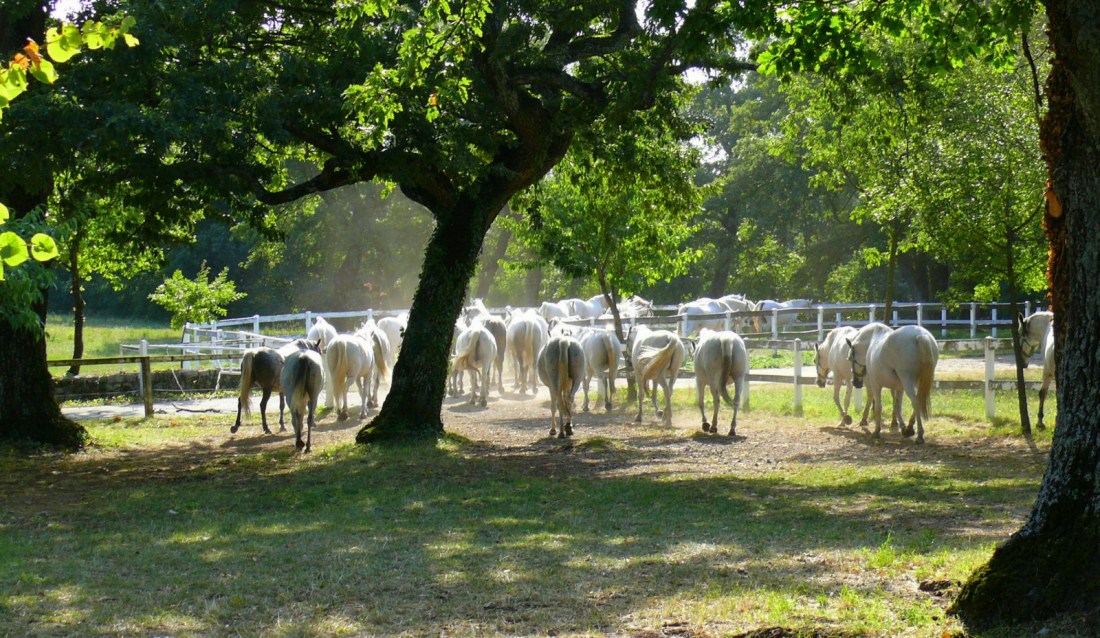
In popular culture
Lipizzans have starred or played supporting roles in many movies, TV shows, books, and other media. In Crossbow It's the horse of Tell called Napolitano.
The 1940 film Florian stars two Lipizzan stallions. It was based on a 1934 novel written by Felix Salten. The wife of the film's producer owned the only Lipizzans in the US at the time the movie
was made. The rescue during World War II of the Lipizzan stallions is depicted in the 1963 Walt Disney movie Miracle of the White Stallions. The movie was the only live-action, relatively
realistic film set against a World War II backdrop that Disney has ever produced.
In the feature film Crimson Tide, a discussion between the two main characters over whether Lipizzans came from Spain or Portugal, and whether they are born white or black, is used to
represent the film's suppressed racial conflict and the dividing of the world between two main powers during the Cold War.
Television programs featuring the Lipizzans include The White Horses, a 1965 children's television series co-produced by RTV Ljubljana (now RTV Slovenija) of Yugoslaviaand BR-TV of Germany,
rebroadcast in the United Kingdom. It followed the adventures of a teenaged girl who visits a farm where Lipizzan horses are raised.
Many books and poems mention or star Lipizzans. In 2011, the Dutch writer Frank Westerman published a book on the history of the 20th century through the perspective of the Lipizzan horses,
Brother Mendel's Perfect Horse. In the 2004 novel The Star of Kazan by Eva Ibbotson, Lipizzan horses and the Spanish Riding School are key elements of both the plot and the setting.
Lipizzans and the Spanish Riding School also play a crucial role in Mary Stewart's 1965 novel Airs Above the Ground and Marguerite Henry's 1964 children's novel White Stallion of Lipizza.
In the 1960s, the Slovene poet Edvard Kocbek wrote a poem dedicated to the Lipizzan horses. On June 21, 2011 Annie Wedekind released "Mercury's Flight: The Story of a Lipizzaner Stallion"
through Breyer Horses as part of The Breyer Horse Collection book series.In the season-one episode of The Angry Beavers, "Fancy Prance" Norbert confesses to Daggett that his lifelong
dream is to become a Lipizzaner stallion. Former concert promoter Gary Lashinsky owned the World Famous Lipizzaner Stallions until they filed for chapter 7 bankruptcy and permanently
closed. A new movie based on the World War II evacuation of Lipizzaners from a Nazi breeding farm was expected to hit
All about the Spanish Riding School
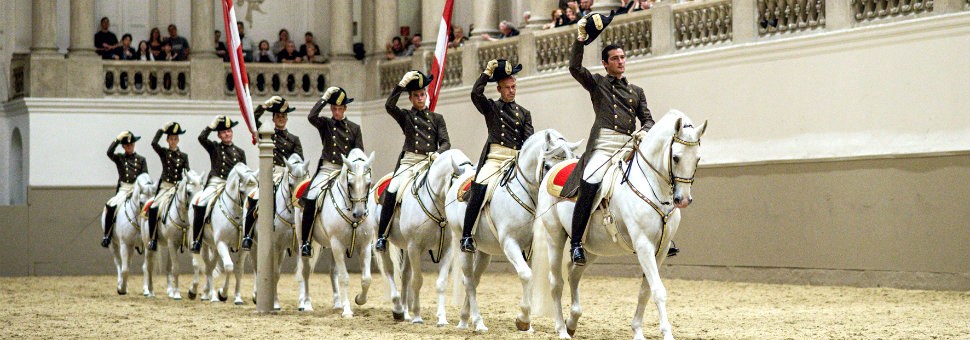
(German: Spanische Hofreitschule) of Vienna, Austria, is a traditional riding school for Lipizzan horses, which perform in the Winter Riding School (Winterreitschule) in the Hofburg.
Not only is it a centre for classical dressage, the headquarters is a tourist attraction in Vienna that offers public performances as well as permitting public viewing of some training sessions.
The presentation builds on four centuries of experience and tradition in classical dressage. The leading horses and riders of the school also periodically tour and perform worldwide.
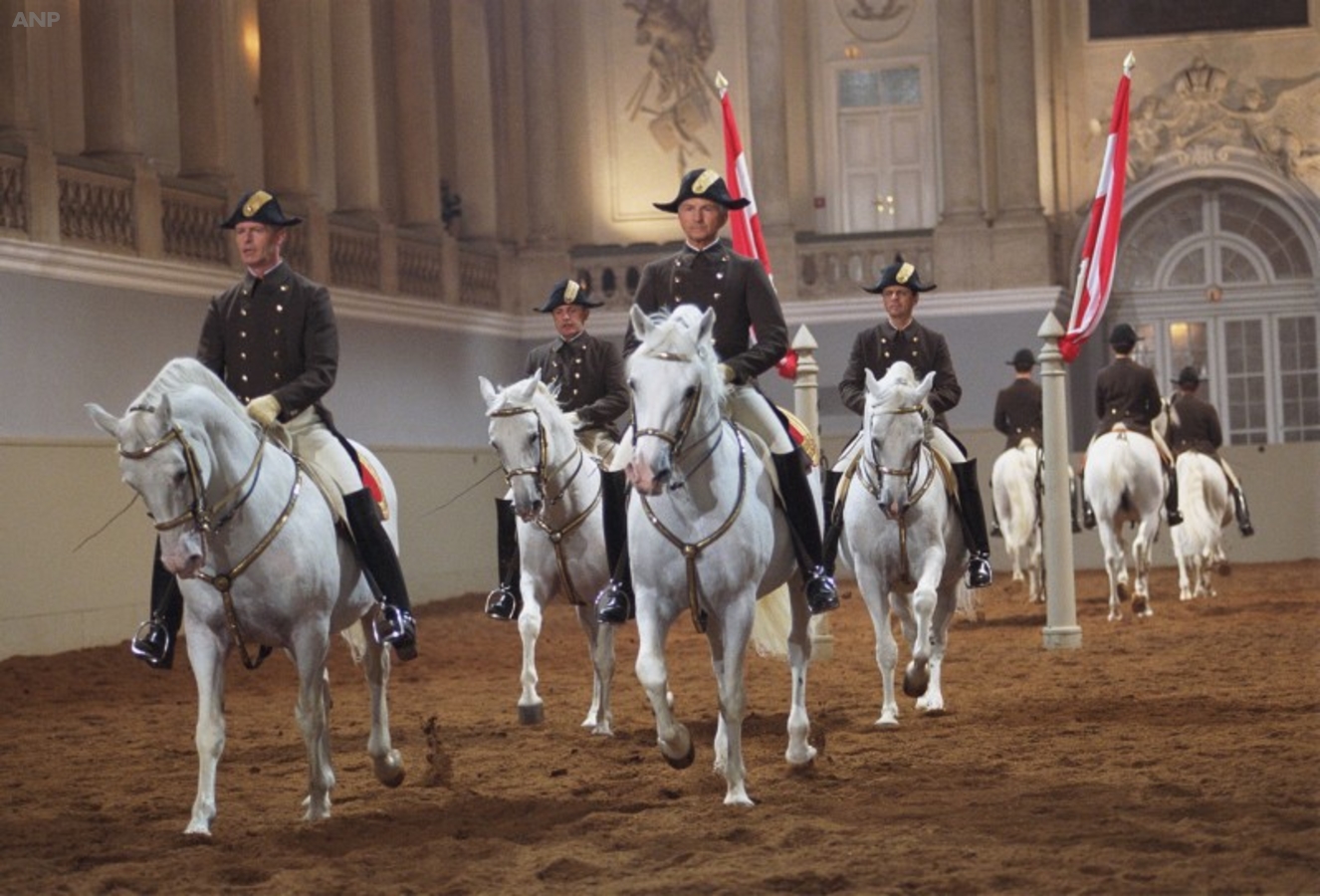
The location
Lipizzaner horses returning to stables after a time of training. The stables are located next to the Spanish Riding School arena in Vienna, Austria, where the Lipizzaner stallions perform.
The Spanish Riding School is located between Michaelerplatz and Josefsplatz inside the Hofburg in central Vienna. Performances take place in the Winter Riding School, built between 1729–1735.
The Winter Riding School is a sunlight- flooded hall, mainly white with some beige and light grey, with a portrait of Emperor Charles VI above the royal box and opposite the entrance
(to which the riders always salute before they ride), which measures 55 by 18 metres (180 by 59 ft) and is 17 metres (56 ft) in height.
The Spanish Riding School also has summer stables in Heldenberg-Wetzdorf-Lower Austria. The 68 resident stallions are taken there in July and August for seven weeks, where they are kept in
stalls with paddocks. The horses are not schooled during this period, but instead are hacked in the nearby forest.
History
The riding school was first named during the Habsburg Monarchy in 1572, long before the French manege of Antoine de Pluvinel, and is the oldest of its kind in the world. Records show
that a wooden riding arena was first commissioned in 1565, but it wasn't until 1729 that Emperor Charles VI commissioned the architect Joseph Emanuel Fischer von Erlach to build the white
riding hall used today. Prior to that time, the School operated from a wooden arena at the Josefsplatz. For a time, the riding hall was used for various ceremonies, but it is now open to the public,
who may witness the training and performances by the stallions.
The Spanish Riding School was named for the Spanish horses that formed one of the bases of the Lipizzan breed, which is used exclusively at the school. Today the horses delivered to the
Spanish Riding School are bred at the Piber Federal Stud located near the village of Piber in western Styria, Austria. One of the original studs used to develop the breed was Lipizza,
now called Lipica, near Trieste in modern Slovenia, which gave its name to the breed.
The Spanish Riding School has antecedents in military traditions dating as far back as Xenophon in Ancient Greece, and particularly from the military horsemanship of the post-medieval
ages when knights attempted to retain their battlefield preeminence by shedding heavy armor and learning to maneuver quickly and with great complexity on a firearms-dominated battlefield.
Traditionally, Lipizzaners at the school have been trained and ridden wholly by men, although the Spanish Riding School states that there has never been an official ban on women.
In October 2008, two women, Sojourner Morrell, 18-year-old from the United Kingdom and Hannah Zeitlhofer, 21-year-old from Austria, passed the entrance exam and were
accepted to train as riders at the school - the first women to do so in 436 years.
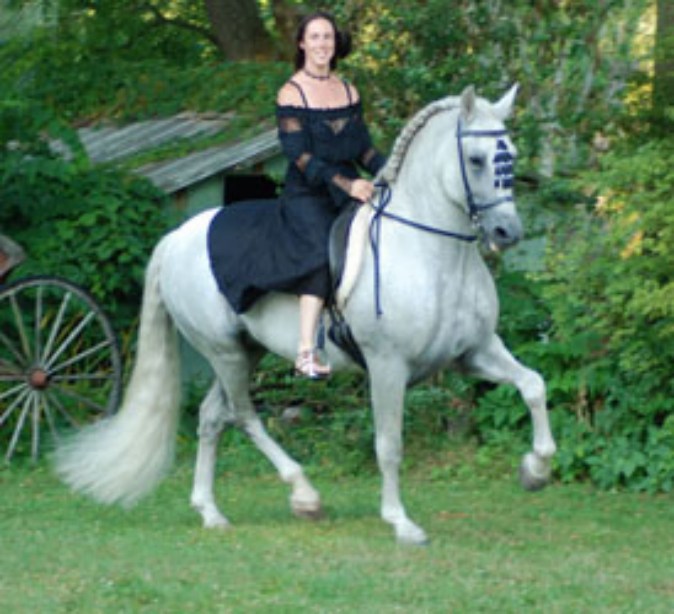
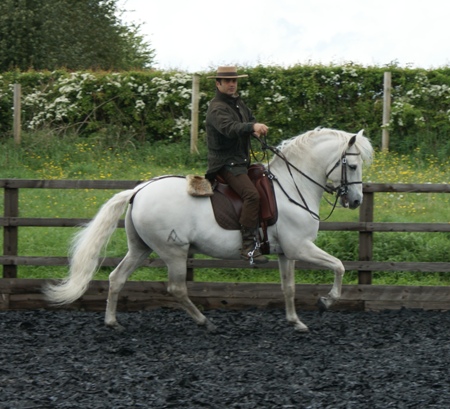
ethods
The methods used by the Riding School are based on François Robichon de la Gueriniere. It is a common myth that the movements were developed to aid in battle; in fact, they were used to strengthen
the war horse's body and mind and make him a supreme athlete, not to actually attack. All movements are based on those naturally performed by the horse when at liberty, with the exception of one-tempi changes.
The stallions are taught in three stages:
Remontenschule: ("forward riding") This stage begins when the horse is first brought to the Spanish Riding School as a 4-year-old. The stallion is taught to be saddled and bridled, and is
started on the longe to teach him the aids, to improve his obedience, and to strengthen his muscles in preparation for a rider. Work on the longe includes transitions between the walk,
trot, and canter, and changes of tempo within the gait, and lasts 2–3 months before a rider is ever placed on the animal's back. After longeing, the horse is ridden in an arena on straight
lines, to teach him to respond correctly to the rider's aids while mounted. The main goals during this time are to develop free forward movement in the ordinary (not collected or extended)
gaits, with correct contact and on a long rein, and to begin to cultivate straightness. Additionally, the training should have improved the animal's strength and stamina to
prepare him for the next stage.
Campagneschule: ("campaign school") The horse is usually ready for the second stage after a year of riding in the first stage, although this time-frame is always adjusted to the individual horse.
Young stallions are always placed with experienced riders during this second stage, to help prevent the development of bad habits due to incorrect work. During this time, he is taught
collection, and is ridden in turns and circles at all gaits. The main purpose of this phase is to develop impulsion, improve the natural paces, promote self-carriage, make the horse supple
and flexible, and gradually develop the muscles of the horse. The horse will learn to bend correctly in the neck, body, and at the poll as appropriate for his conformation. It is during this
time that the majority of training takes place, and the horse learns to shorten and lengthen his gait and perform lateral movements, with most of the work taking place at the trot.
This phase requires the most time of the three, generally two-thirds of the total time it takes to produce the "finished" horse. Before the end of this phase, the stallions are introduced
to the double bridle, to refine the rider's aids.
Hohe Schule: ("high school" or Haute Ecole) In this stage, the rider will gradually push the horse to perfection in straightness, contact, suppleness, collection, and impulsion, to
produce improved gaits. Through this work, the horse will learn to perform some of the most difficult movements such as pirouette, passage, piaffe and One-Tempi-Changes.
Many of the exercises first taught in the Campaign school are utilized in this phase, focusing on the quality of the work and using them to help teach the more difficult
exercises. The stallions are then assessed to determine if they are suitable for the demanding "airs above the ground," the final step in their training. Once they are chosen,
the horses are taught their most-suitable school jump, first on the ground and then under saddle.
The riders, too, are carefully schooled. They first work on the longe without stirrups and reins on well-trained horses for up to 3 years, to teach a balanced and independent seat. They are then
allowed to control the animals themselves, under the eye of an experienced rider, until they can perform the high school movements. With intensive training, this will take 2–4 years. The rider
is then allowed to train a young stallion from unbroken up to High School, a process that usually takes 4–6 additional years.
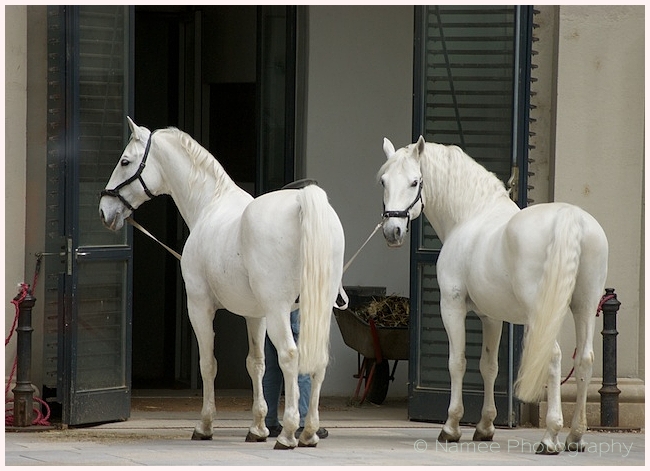
Performances
Performances at the Spanish Riding School were originally only presented to guests of the Court, and then when they were finally opened to the general population at the turn of the century, it was
only for special occasions. However, after the fall of the Austro-Hungarian empire in 1918, the school opened up regular performances to the general public to help pay for its upkeep.
The original performances were quite short, with the chief riders presenting stallions in the High School movements, airs above the ground, work in-hand and exercises on the long rein, and then a
Pas de Deux (two horses in mirror image) and a four-rider Quadrille would finish the performance.
The program today has expanded. It begins with the "Young Stallions" which have recently arrived from the stud farm at Piber. They demonstrate the first phase of training, in which the horse moves
forward and accepts the aids. The next section is the "All Steps and Movements of the High School" where four fully trained stallions perform each of the movements seen in the
Olympic Grand Prix Dressage test, including the flying change, passage, pirouette, and piaffe. The horses are ridden in double bridle, to demonstrate their high level of training.
The "Pas De Deux" is then shown, with two horses demonstrating High School movements in mirror image.
The next section is the "Work in Hand", to show how the horses are trained for the school jumps levade, capriole, and courbette, all in-hand. This demonstration includes work on the diagonal,
on the wall and between the pillars. All stallions wear a snaffle bridle, cavesson, side reins, some on short hand rein, some with a short longe. All carry the traditional white saddle of the school.
Then one stallion is then worked "On the Long Rein", in which a fully trained Lipizzan performs all the movements it would be asked to do under saddle. In this section, the horse wears a red
snaffle bridle and a red shabrack (saddlecloth) with the golden coat of arms of the Austrian Empire.
The "Airs Above the Ground" follows; all horses are under saddle, but the riders do not have stirrups. Movements performed include the levade, capriole and courbette. The performance
finishes with the "School Quadrille", consisting of 8 riders working in formation at the walk, trot, and canter, with flying changes, pirouettes, the half pass and the passage. The ride is performed
to classical music. Lasting 20 minutes, the School Quadrille of the Spanish Riding School is the longest and most difficult in the world.
Courgette Capriole Piaffe in the Pillars Levade




A young stallion on the way from training to the stable
All riders wear the traditional uniform: brown tailcoats, bicorne-style hats, white buckskin breeches, white suede gloves, and black top riding boots. Swan neck spurs are also part of the uniform.
The empire style uniform (1795–1820 in fashion) has remained relatively unchanged for 200 years.
During performances, the fully trained stallions wear a traditional gold-plated breastplate and crupper, called a Goldzeug. They also carry a "school saddle", which is made from buckskin and larger
than the more commonly seen English saddle used by the school when training the stallions and riders. Gold-plated double bridles are only used for performances. All horses, except the young stallions,
wear red and gold or green and gold shabracks, or saddlecloths, under the saddle. Red is for "All Steps and Movements of the High School", "Pas de Deux", "On the Long Rein", "The Grand Solo" and
"The School quadrille." Green is used for "Work In-Hand" and the "Airs above the Ground". The shabrack is also used to differentiate the status of each rider: the director of the school has three gold
bands and gold fringe, the chief riders have three bands and no fringe, riders have two bands, and assistant riders have one.
The young stallions are not exhibited in the same equipment as the more mature animals. They are ridden in a plain snaffle bridle and a simple dressage-style English saddle. For training sessions,
black bridles, both snaffle bit bridles and double bridles, are used for all horses. Horses are clean and well groomed. The Capriole horses wear a braided tail wrapped short in a "queue"
(known elsewhere as a "mud tail"), which is fixed with a decorative tail bag (Schweiftasche).
Dress and equipment
Depiction on the euro
Austrian 2006 EU Presidency commemorative coin
The Spanish Riding School was shown in a recent Austrian euro collectors' coins: the 5 euro Austrian 2006 EU Presidency commemorative coin, minted on January 18, 2006.
The reverse shows the Vienna Hofburg Imperial Palace in the "Josefsplatz" square. The equestrian statue of Joseph II in its center. The wing of the Hofburg can be seen to
the right, which contains the Spanish Riding School and the Redoutensäle.
The capriole

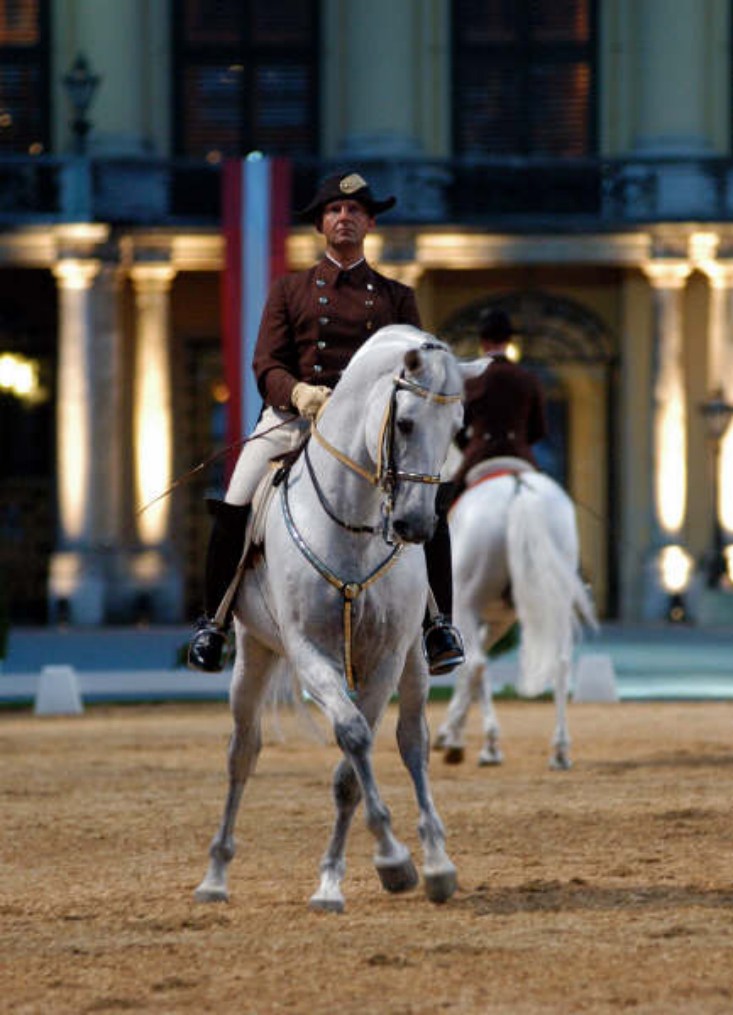
Blood structure
Although hundreds of stallions of the Spanish, baroque type were used in the three centuries of breeding history of the court stud farm Lippiza (1580-1915), a number of stallion tribes
came into being from our own bloodlines. Some of them, such as Toscanello and Lipp, already died out, but we still know six lines, which lead back to an ancestor in the 18th or 19th century:
Pluto (* 1765) Danish white-born stallion from hofstoeterij Frederiksborg
Neapolitano (* 1790) Neapolitan brown stallion
Conversano (* 1767) Neapolitan black stallion from the stud of Count Conversano
Maestoso (* 1773) Fungi stallion of the baroque riding horse type from the court farm Kladrub
Favory (* 1779) Falcon-colored stallion of the baroque riding horse-type from court farm Kladrub
Siglavy (* 1810) Arabian grey stallion, bought in 1816 directly in the desert
Use
The lipizzaner is traditionally bred as medium-sized, light riding and carriage horse. A healthy, hard, strong, agile horse with a lot of endurance and intelligent character. This makes him extremely
suitable for contemporary (international) people's sport. Famous are the Hungarians who have had world champions with Lipizzaners for several decades in the various disciplines. Multiple world
champion IJsbrand Chardon has not chosen a few years ago for his international indoor four-in-hand competitions for the Lipizzaner. But also at national level, various efforts are active, and in
particular in tandem efforts have become Dutch champions.
As a riding horse, the lipizzaner is pre-eminently known as the classic dressage horse. Because of his innate ability to collect, he is extremely suitable for the most daring exercises in the Classical
Dressage, including the so-called "school jumps" as levade, courbette and capriole. World famous are of course the lipizzaner stallions of the Spanish driving school from Vienna.
Because of his on average lower height and relative short-leggedness, the lipizzaner seems less suitable for contemporary dressage, although exceptions also confirm the rule, as regular dressage
riders of the Slovenian A dressage frame also show internationally.
Napolitano
'Napolitano' is Tell's Lipizzan horse. The name is very common in the Lipizzan bloodline (see above at 'bloodstructure'). Tell gets the horse from his friend Stefan in episode 10 and rides with it through
season 1 and 2. Season 2 he doesn't ride much anymore. Sometimes a Fresian, sometimes a brown horse or Marrok horse. Until episode 10 he has Guitano a brown hors. Dantesd also seems
to ride this big horse in episode 6 and 7 Albion and Sanctuary.
The middle horse doesn't look like Napolitano (scene Lady Montal in the gardens of Chateau Pouzilhac) but more like a wild maned temperamentful Andalusian, perhaps this horse was better for this stunt.
A compilation of the adventures of Tell with his white beauty Napolitano about two years at his side.
The photo in the middle is not Napoliato.
La Voie sarde and Desert of Entremont The Imposter In Pouzilhac gardens, The Tower this seems not Napolito, long maned and Andalusian At Lussan, The Tower



Arlempdes, The Stallion Uzes Vallee l' Eure, Ladyship


The Pass Possesed The Citadel Physician
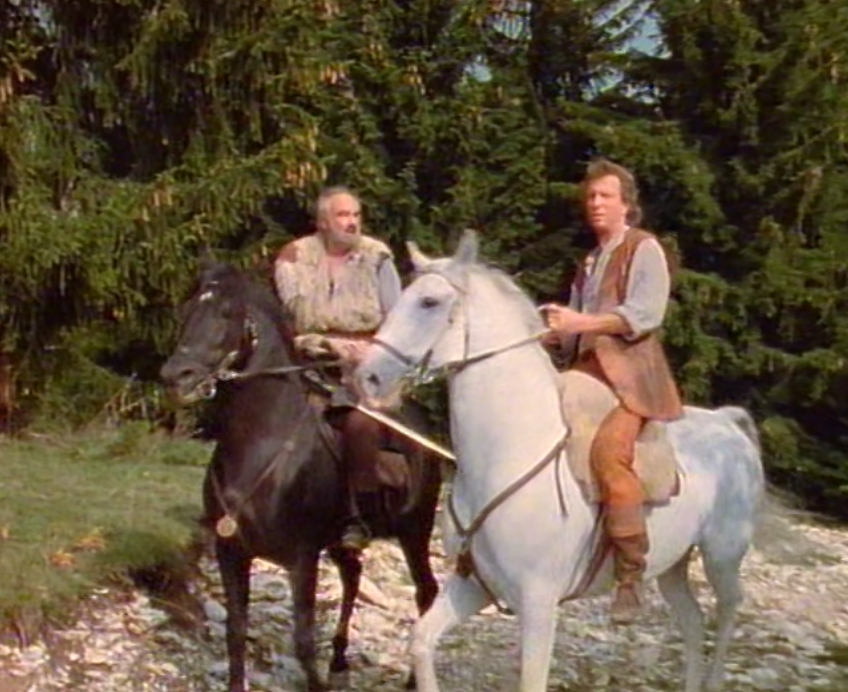
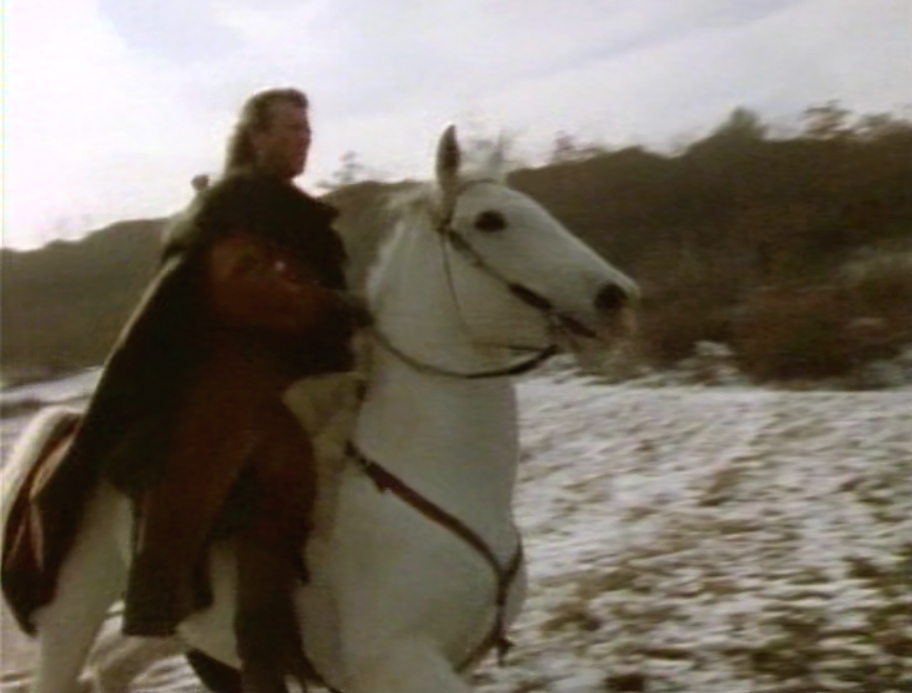
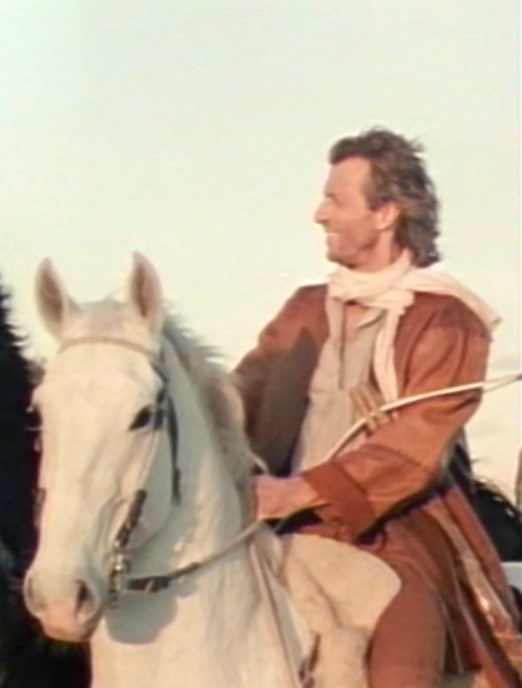
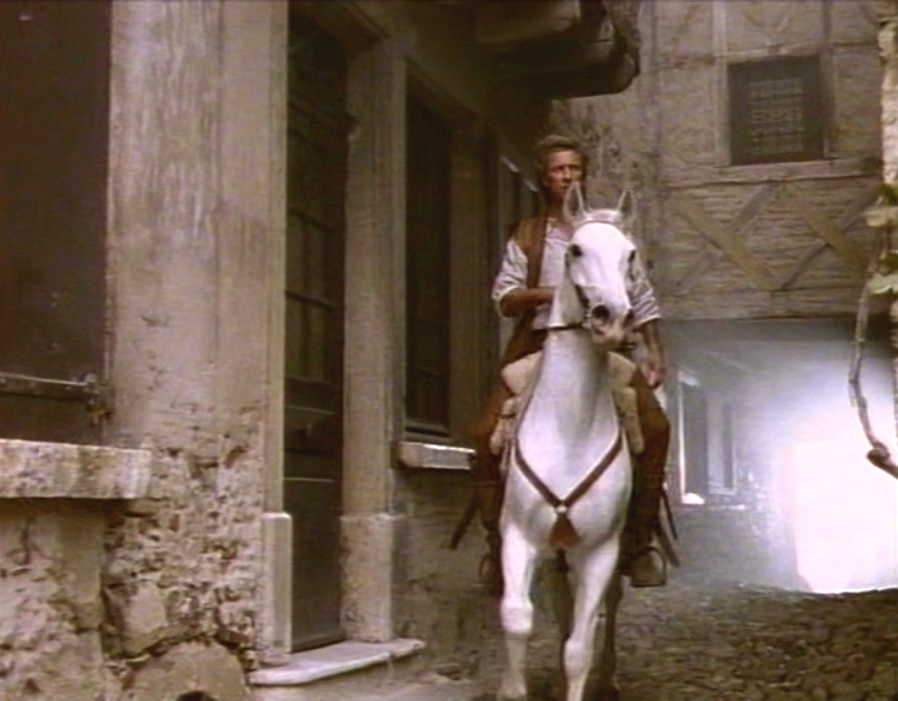
The seekers of the soul The stallion Misalliance and Pass
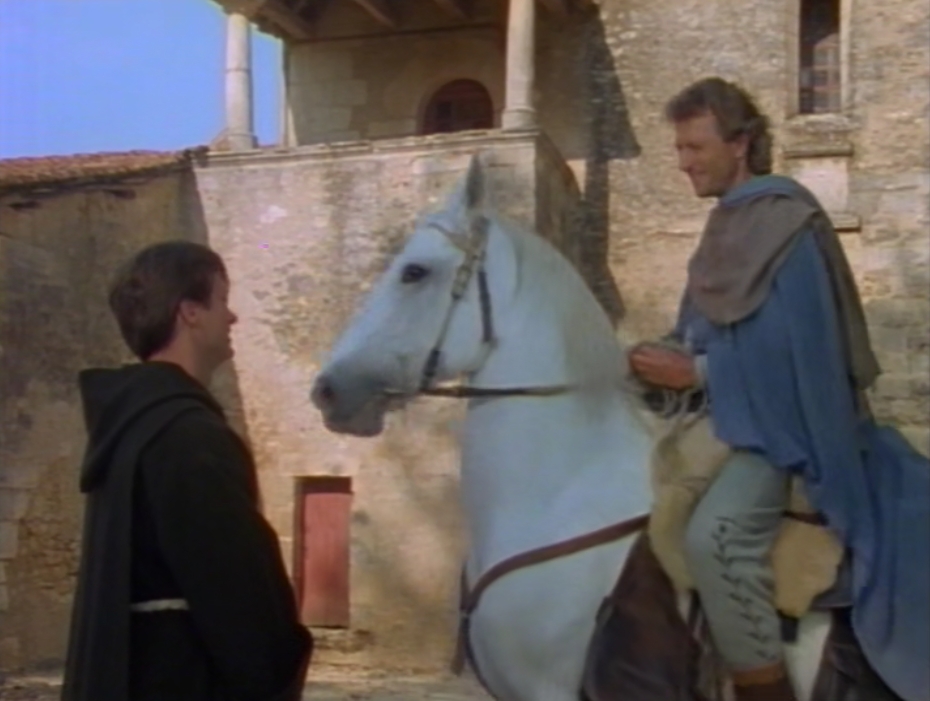
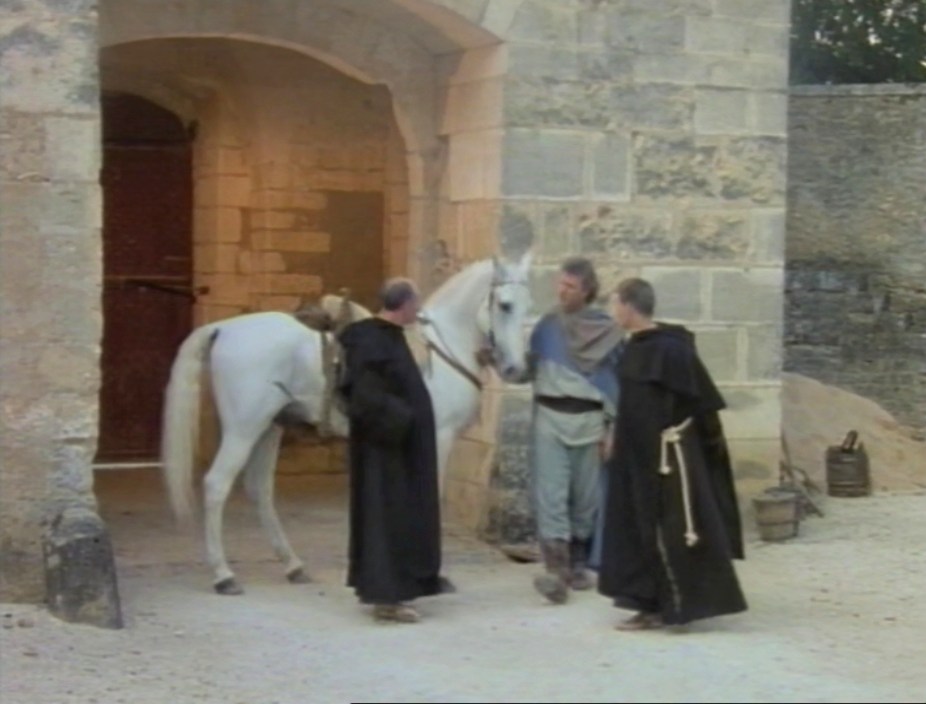
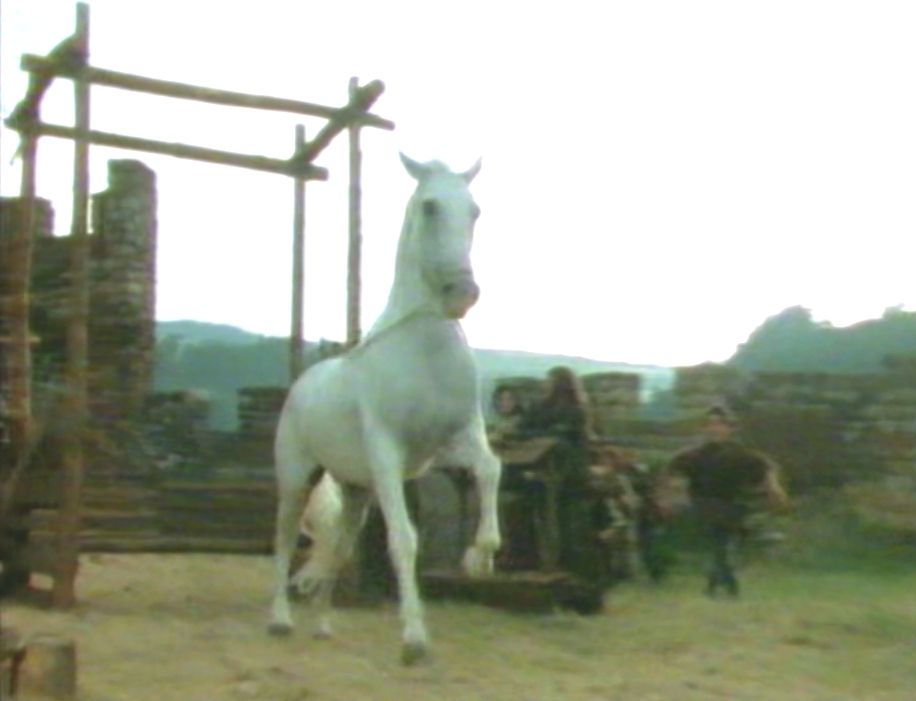
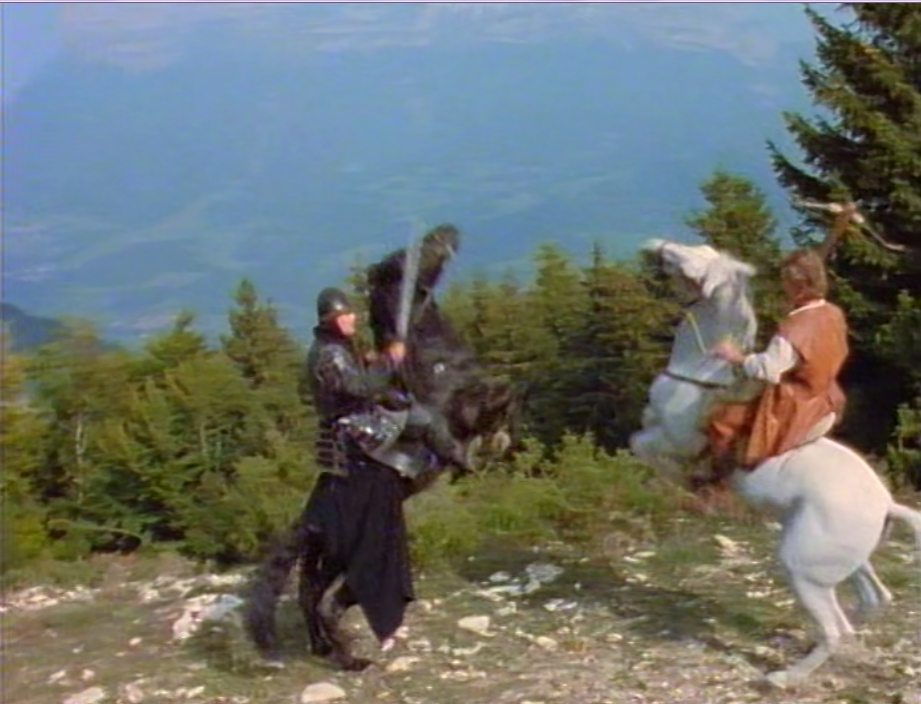
The Princess Bloodbrothers The Alchemist, Lyon Francheville
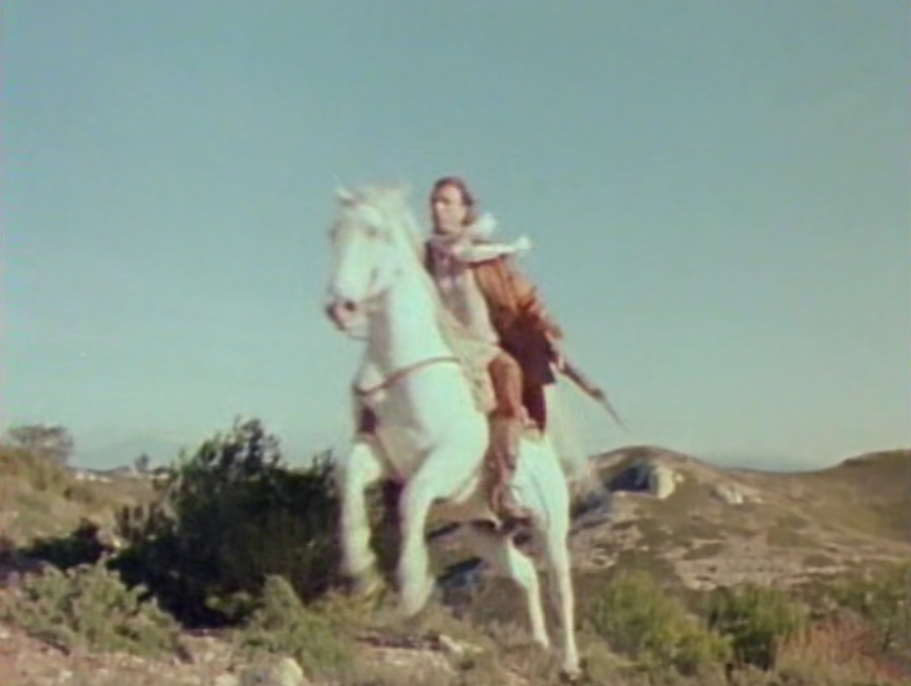
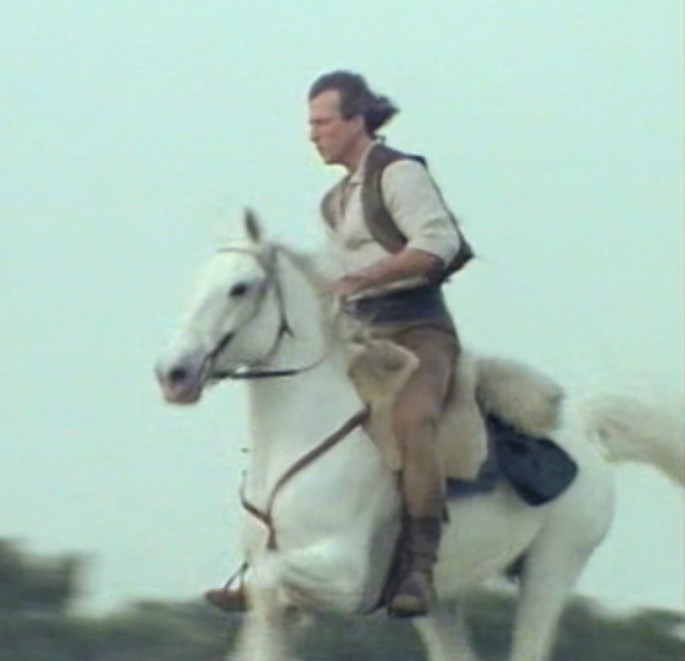
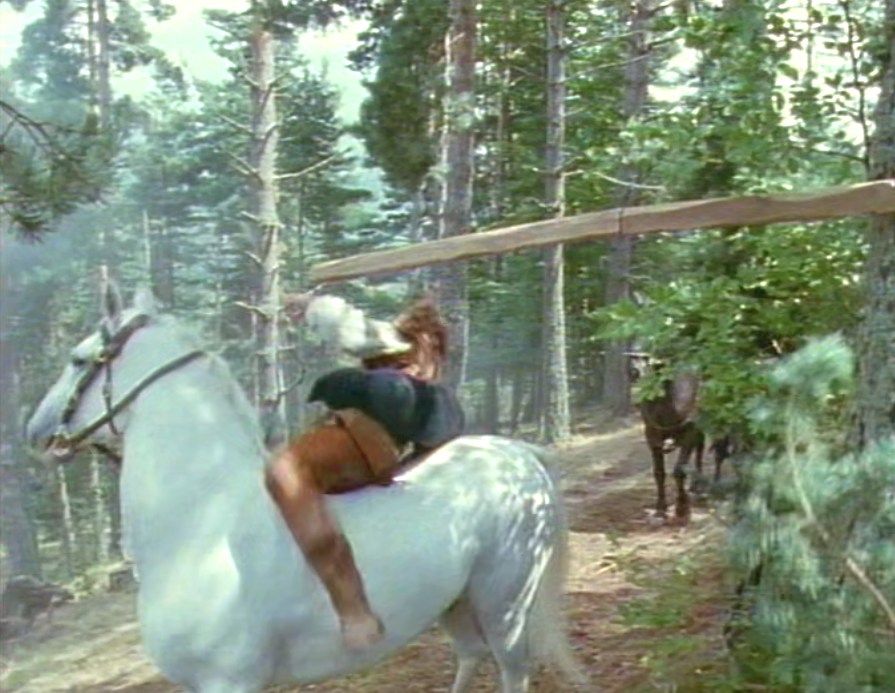
The Stallion
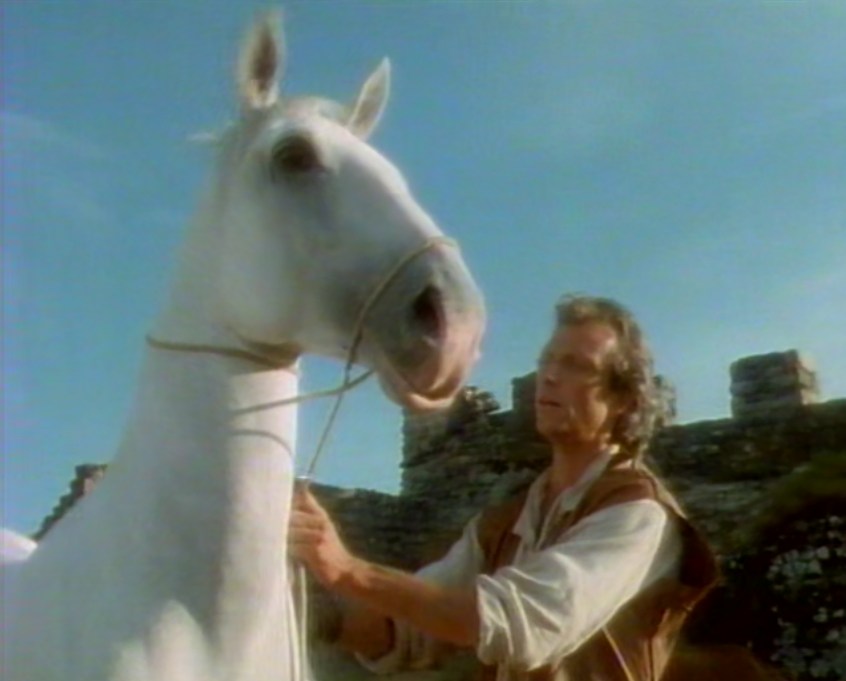
.jpg)
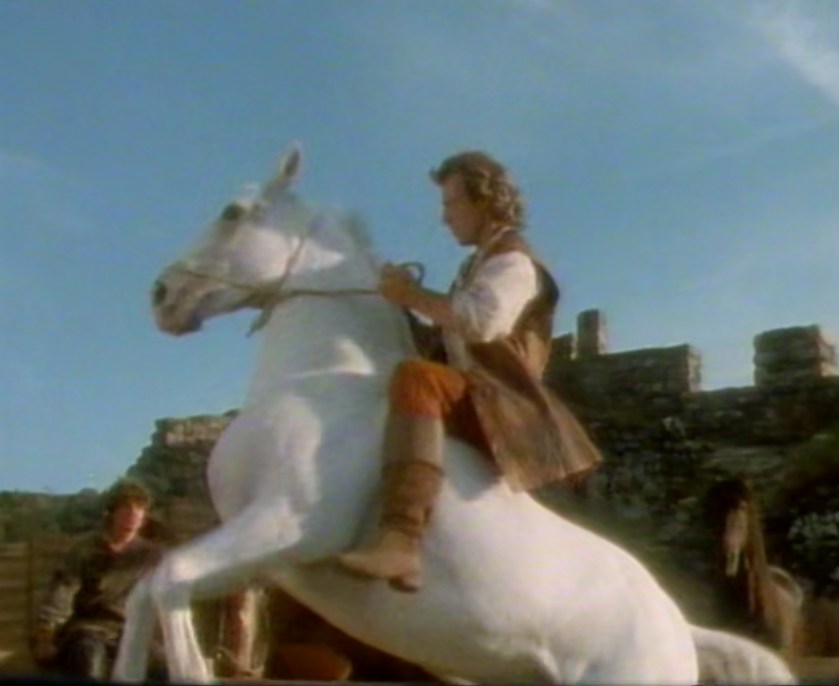
Stand in only for the endshot, the fall off. Middle and right picture: 4 leggs off the ground. Bloodbrothers (end of season)
This horse flies!
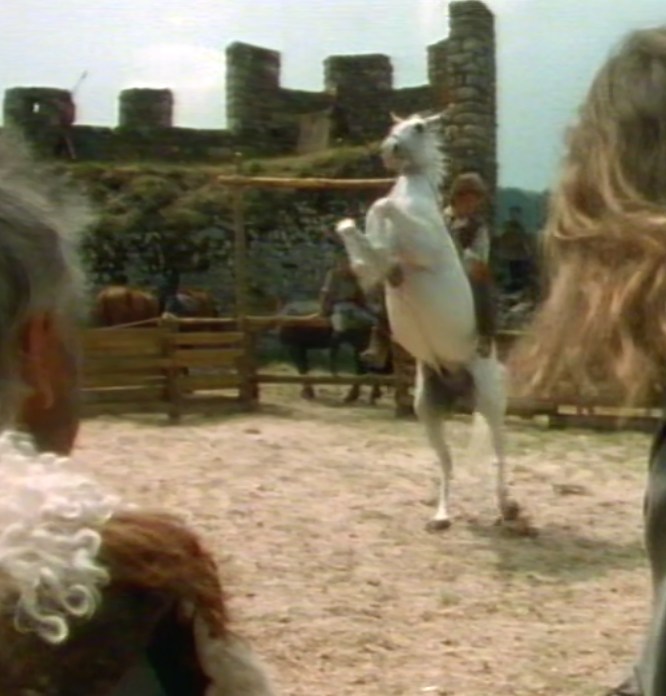
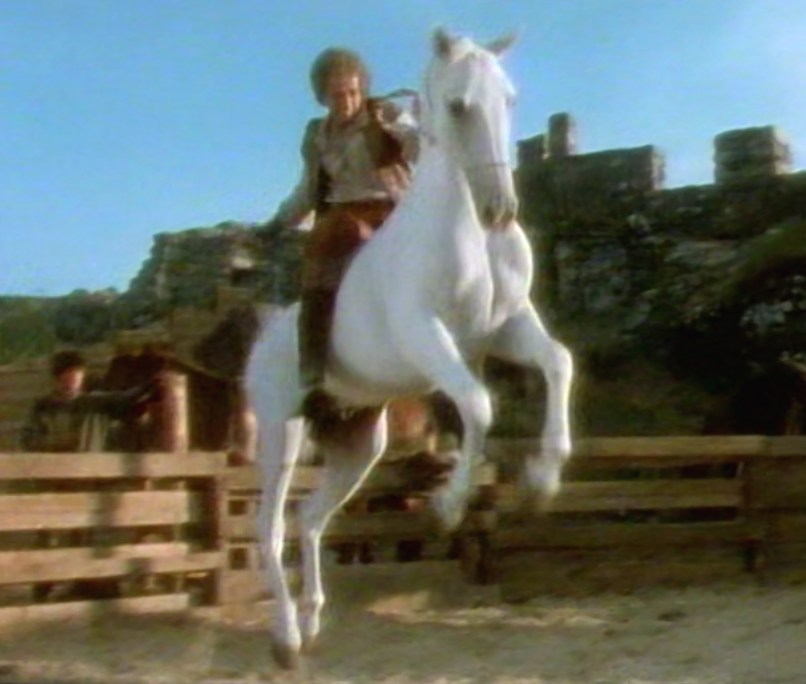
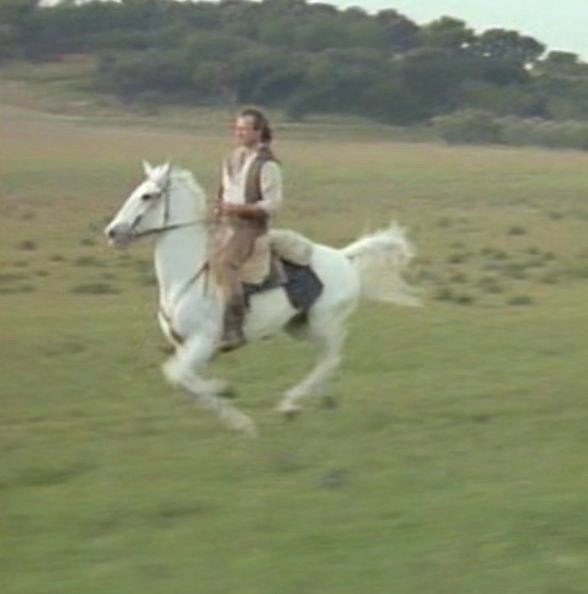
The Princess and The Four Horsemen Opedde le Vieux in the Four Horsemen
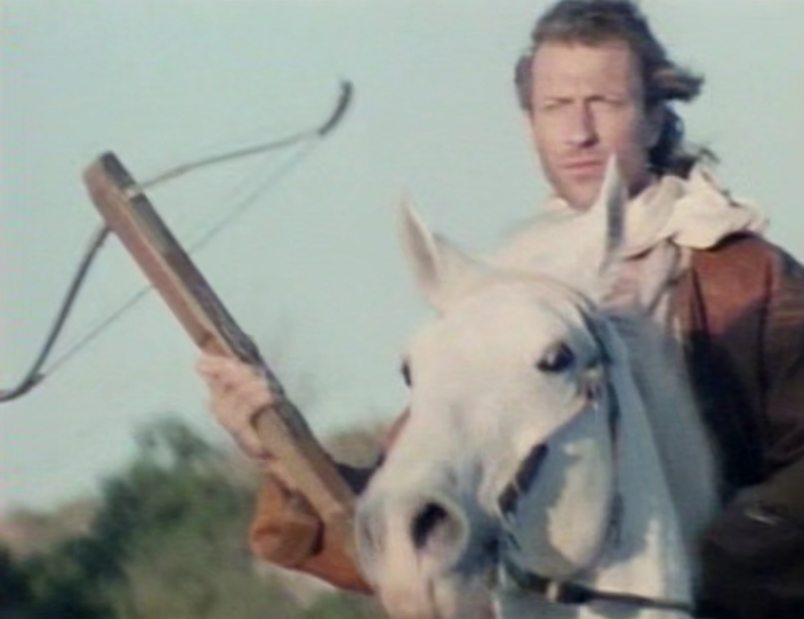
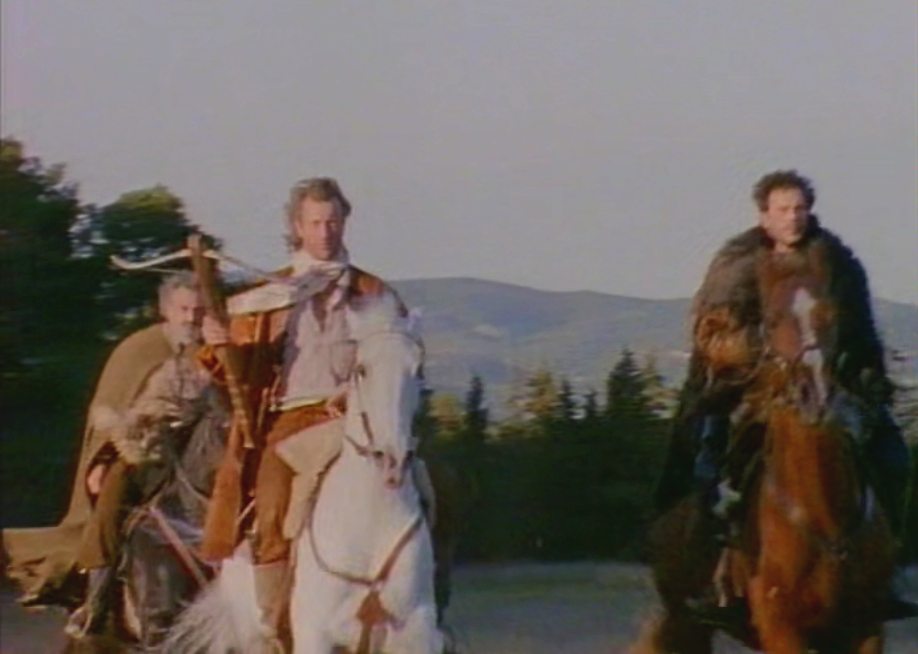
.jpg)
The Imposter, The Pass and Misalliance
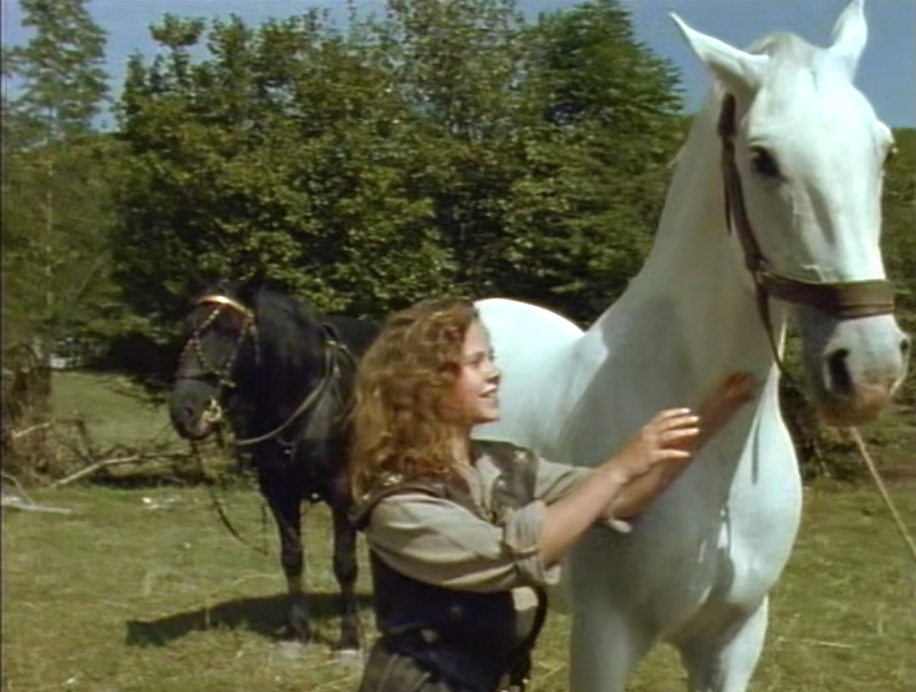
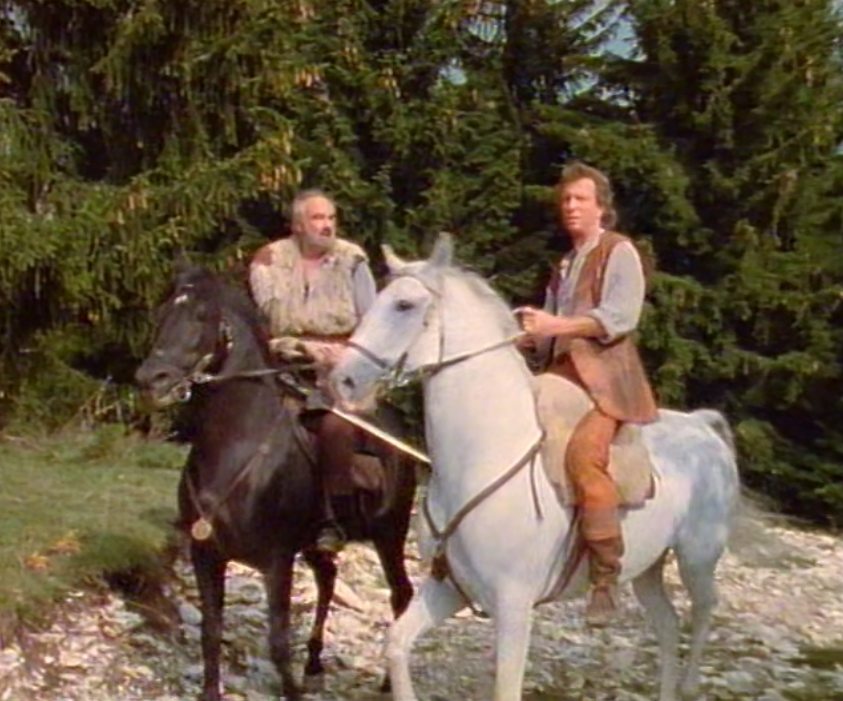
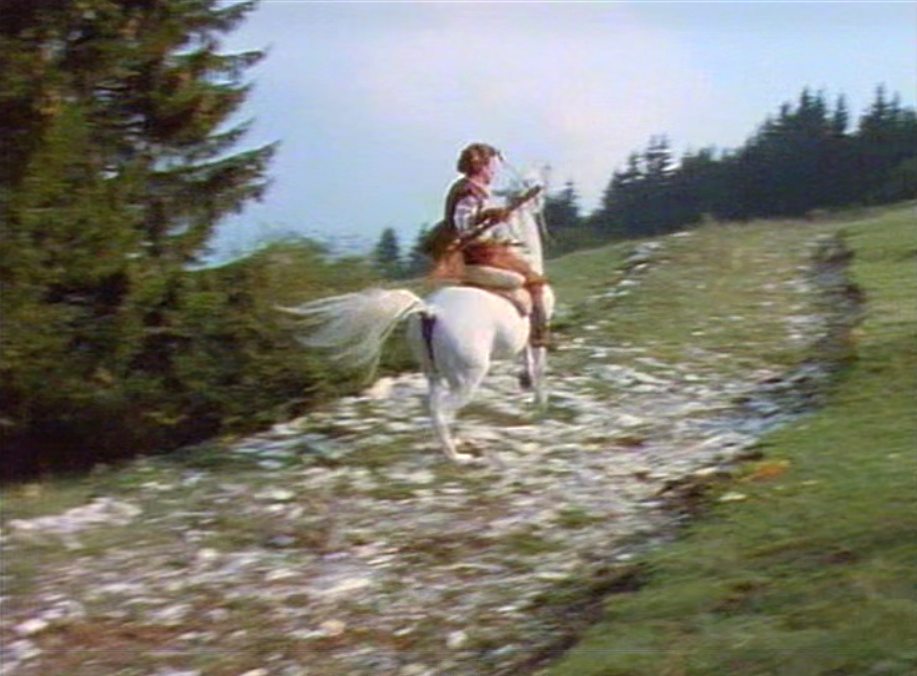
Opedde le Vieux The Moor 1 and 2 Perouges, The physician
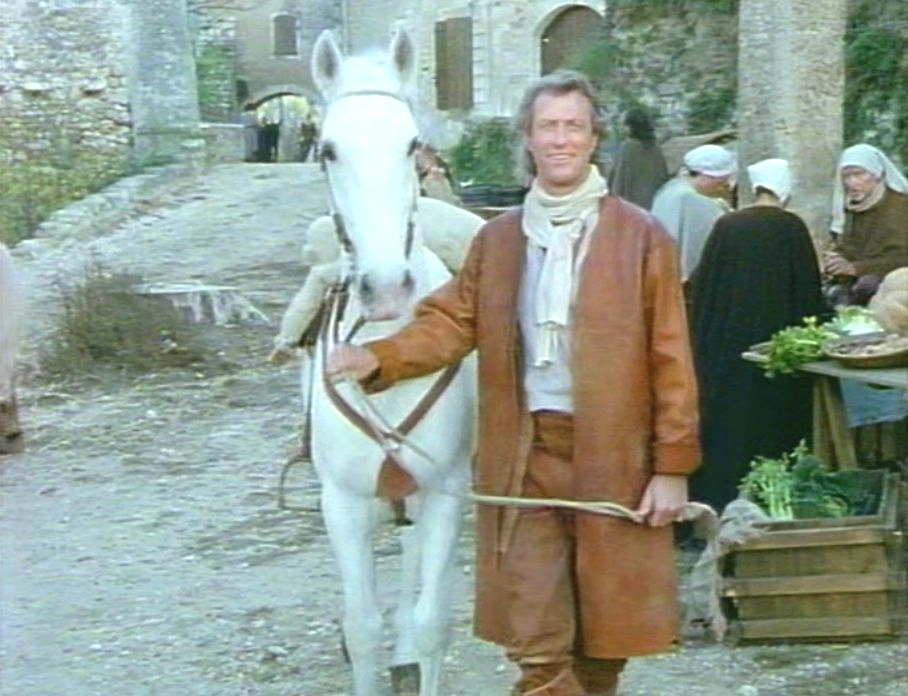
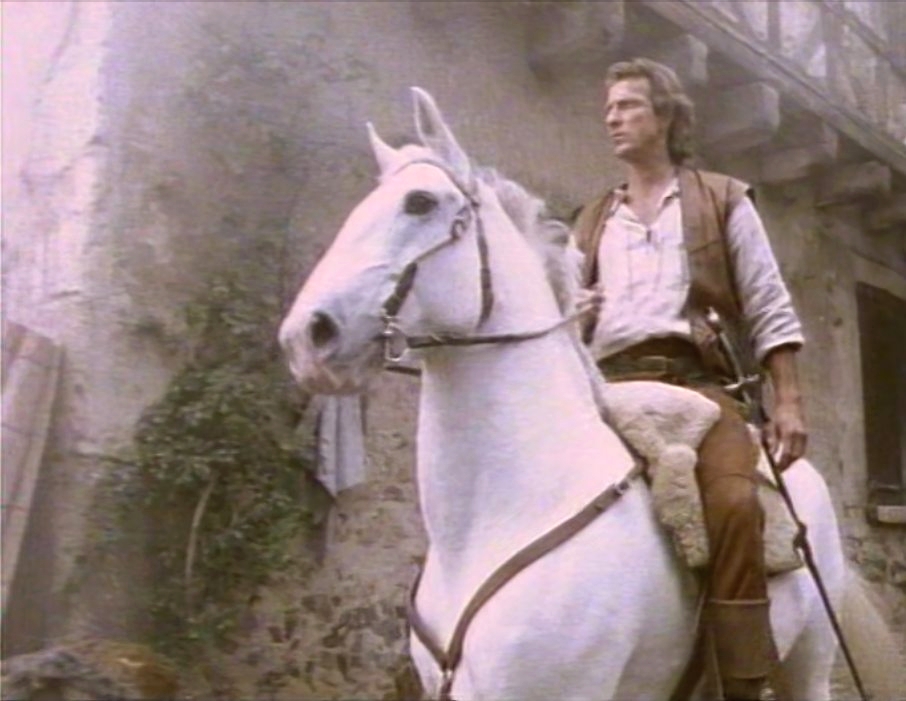
Episode the Pit and Rock. Same horse as left? Episode the Bet, Andalusian horse, a nice extra show shot :) Chateau Pontgibaud.
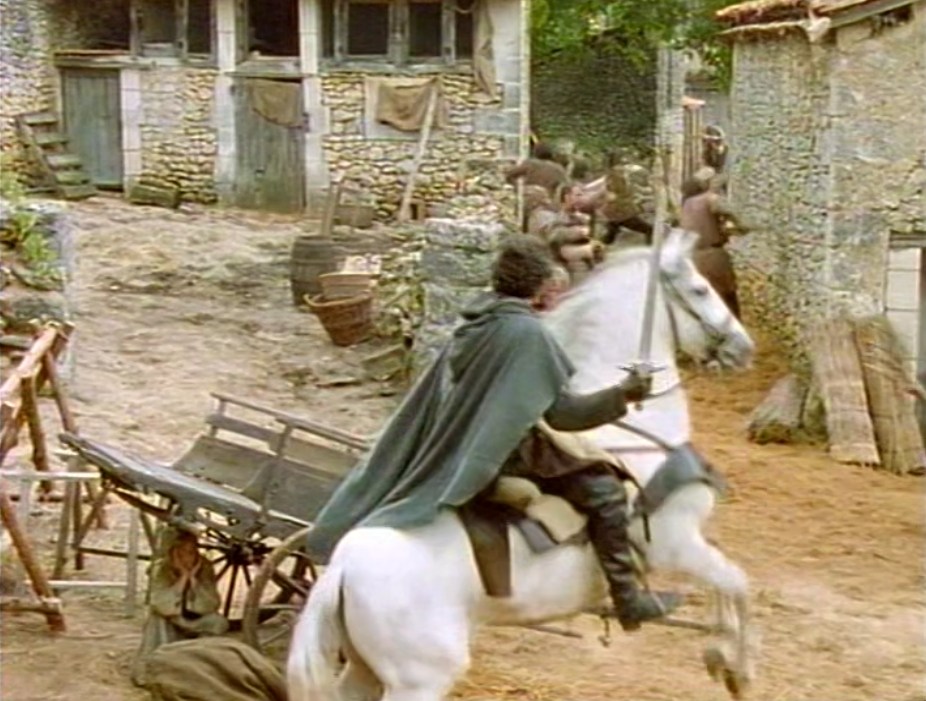
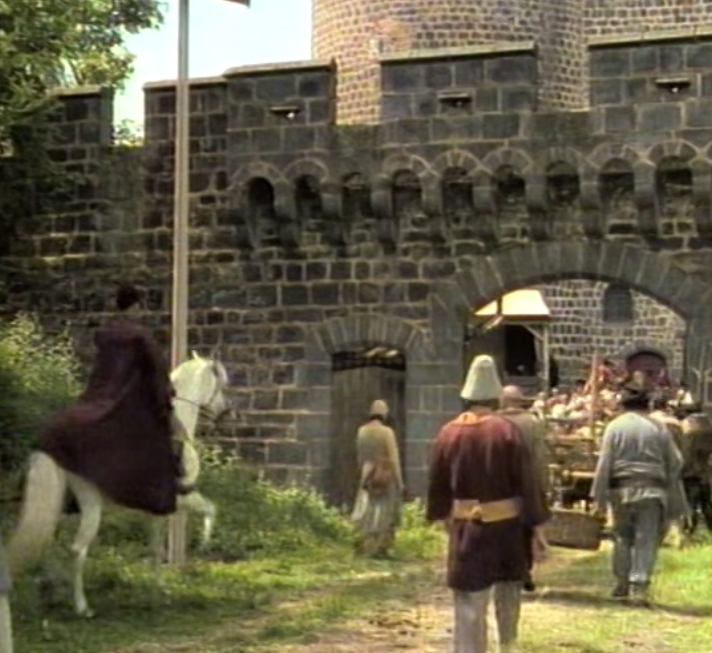
Guitano
The Bet 9 Albion 6 Tell's horse and Dantes, Epierre - Alps
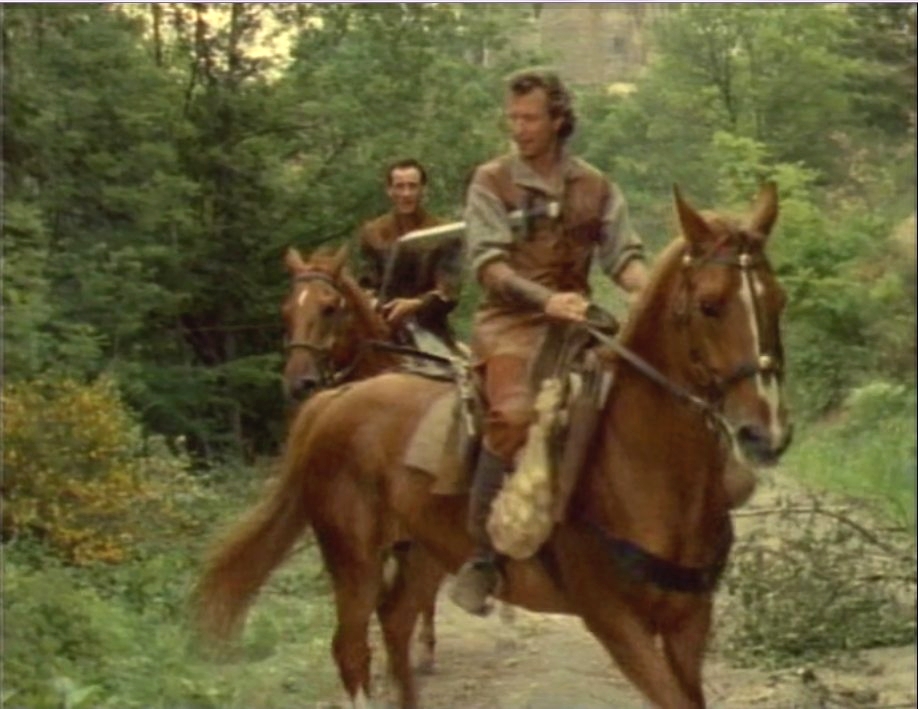
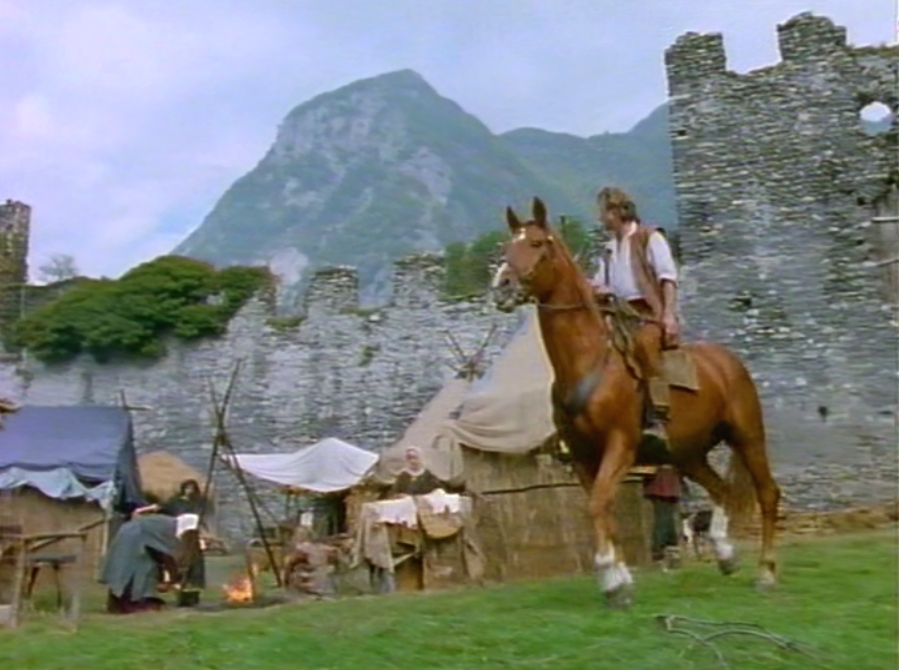
Albion 6, In front of Chateau Virieu Sanctuary 7 at Lavaudieu The Dukes of Zharingen at Tournoel 8 Episode 9 The Bet
